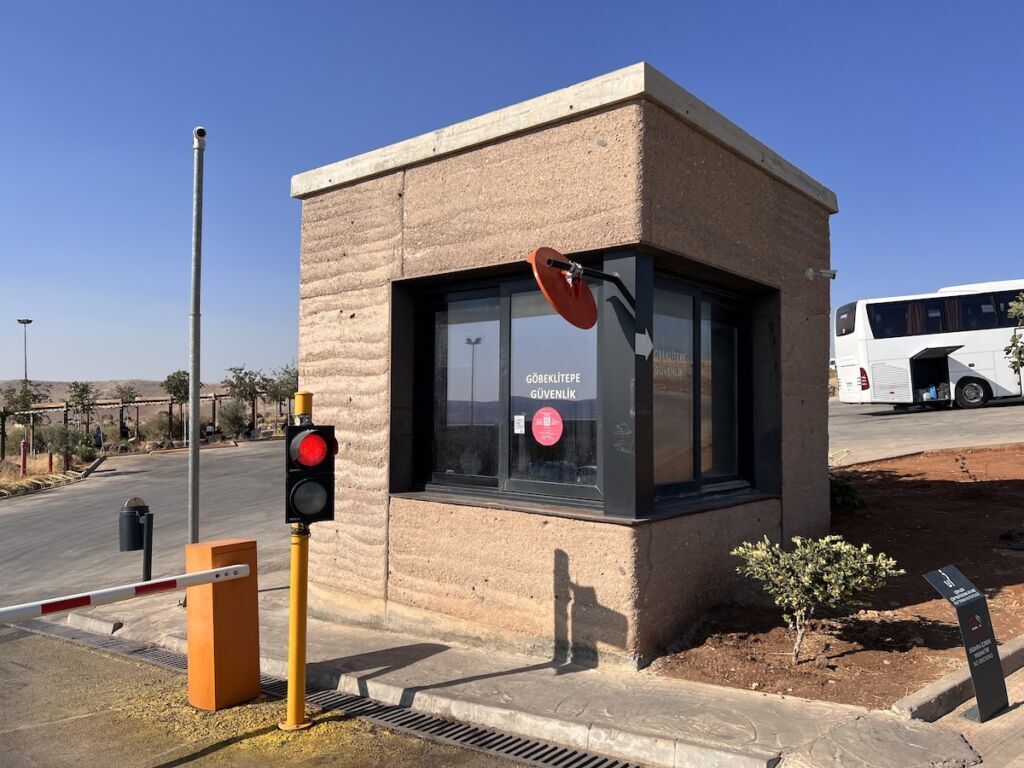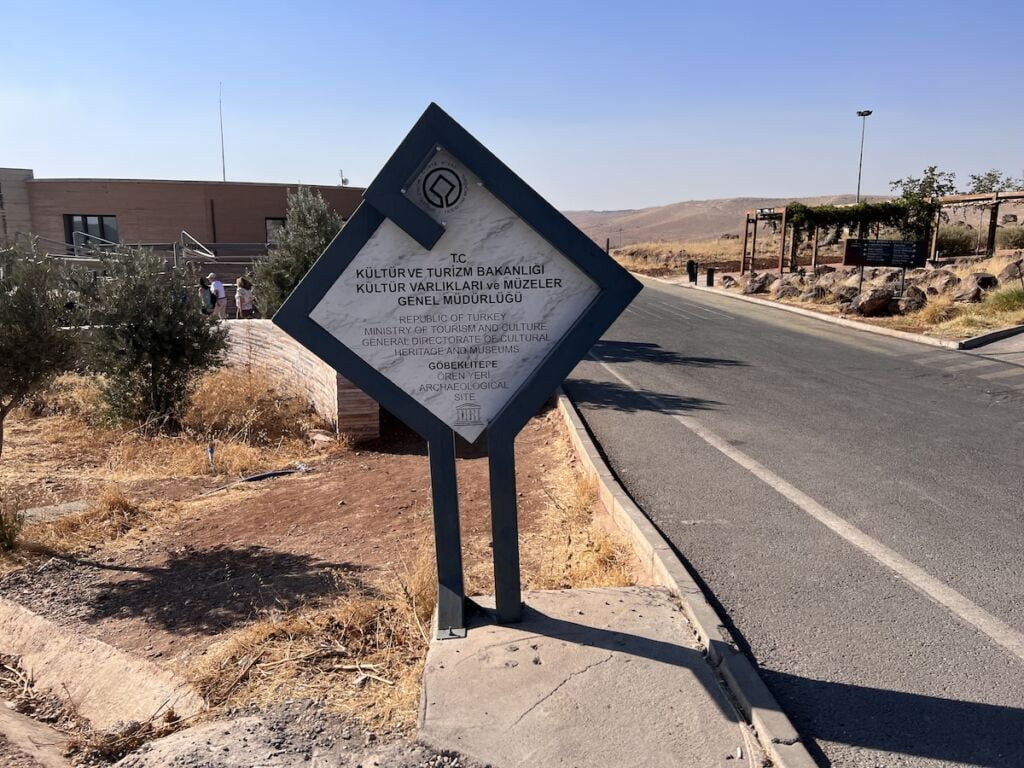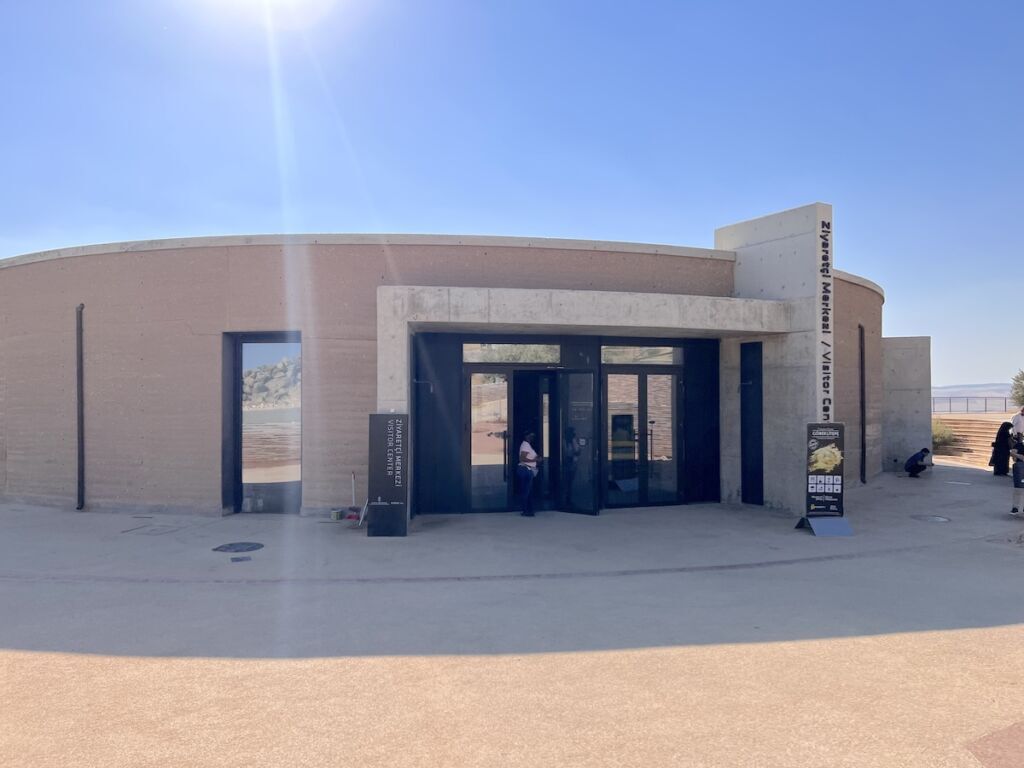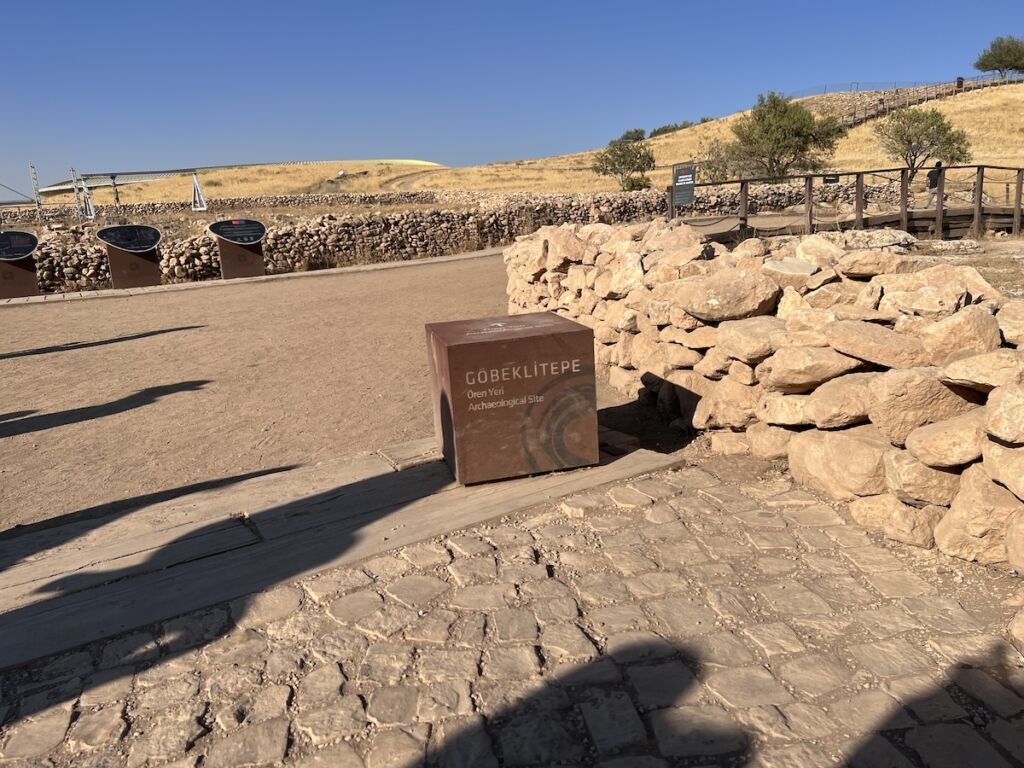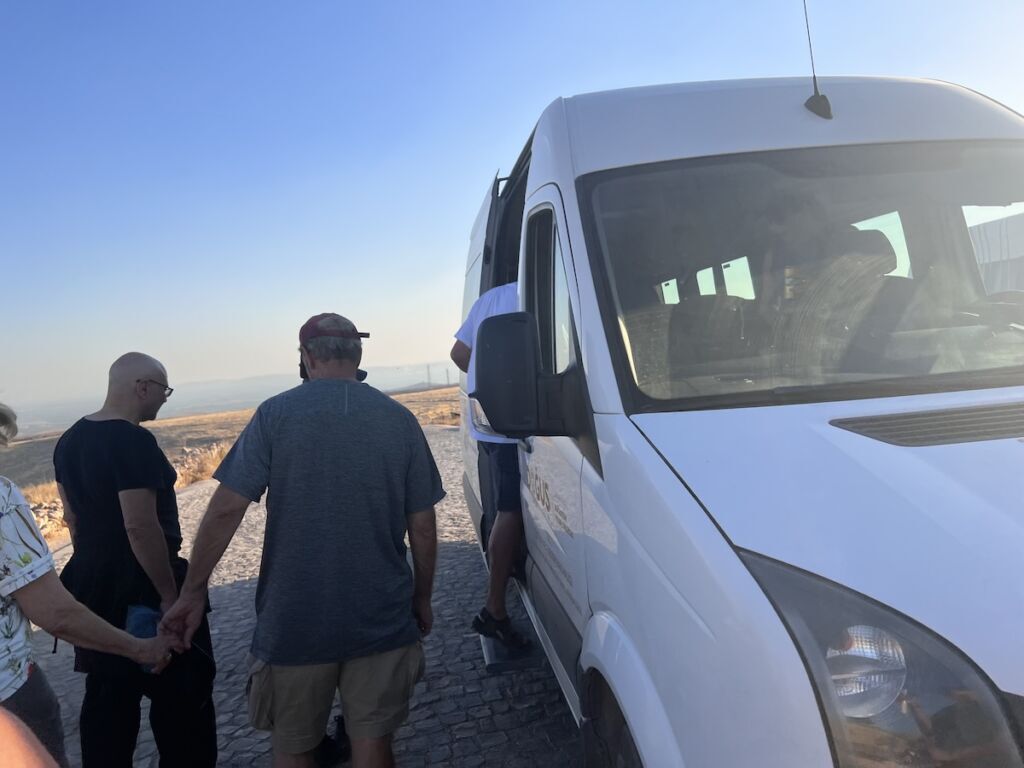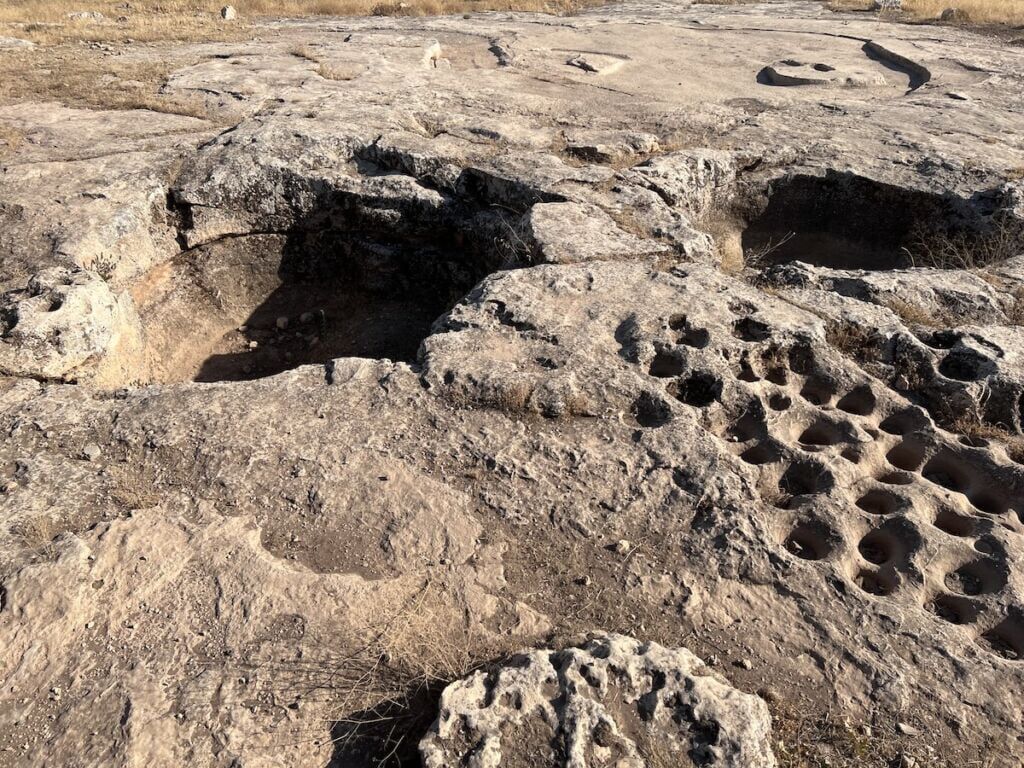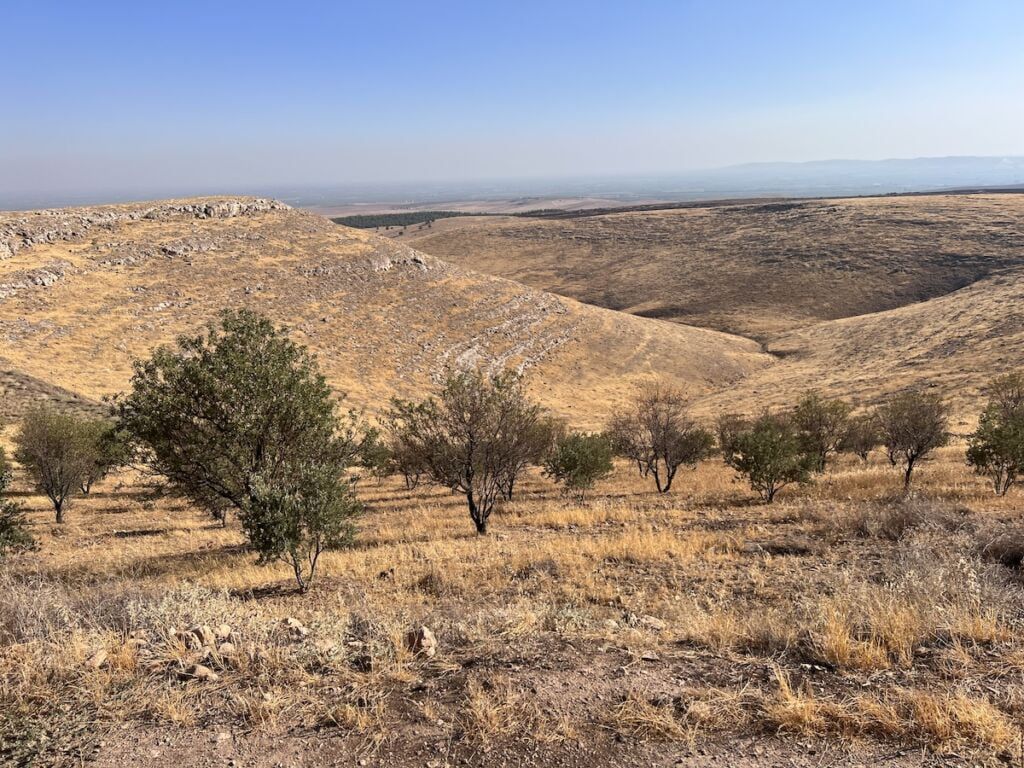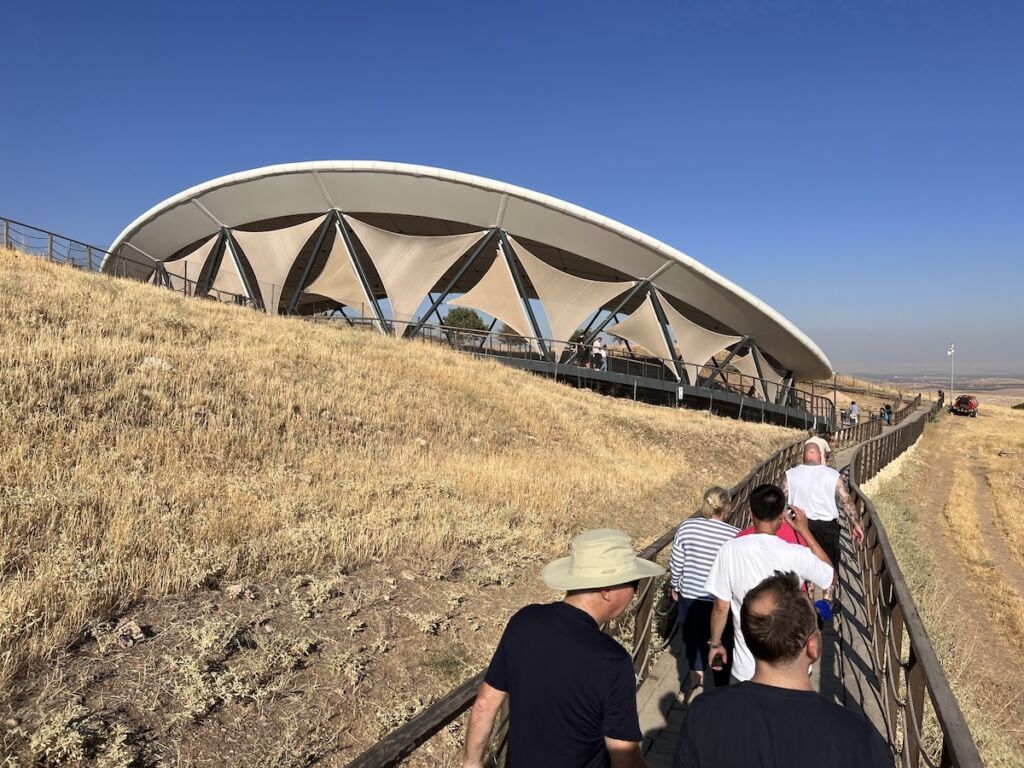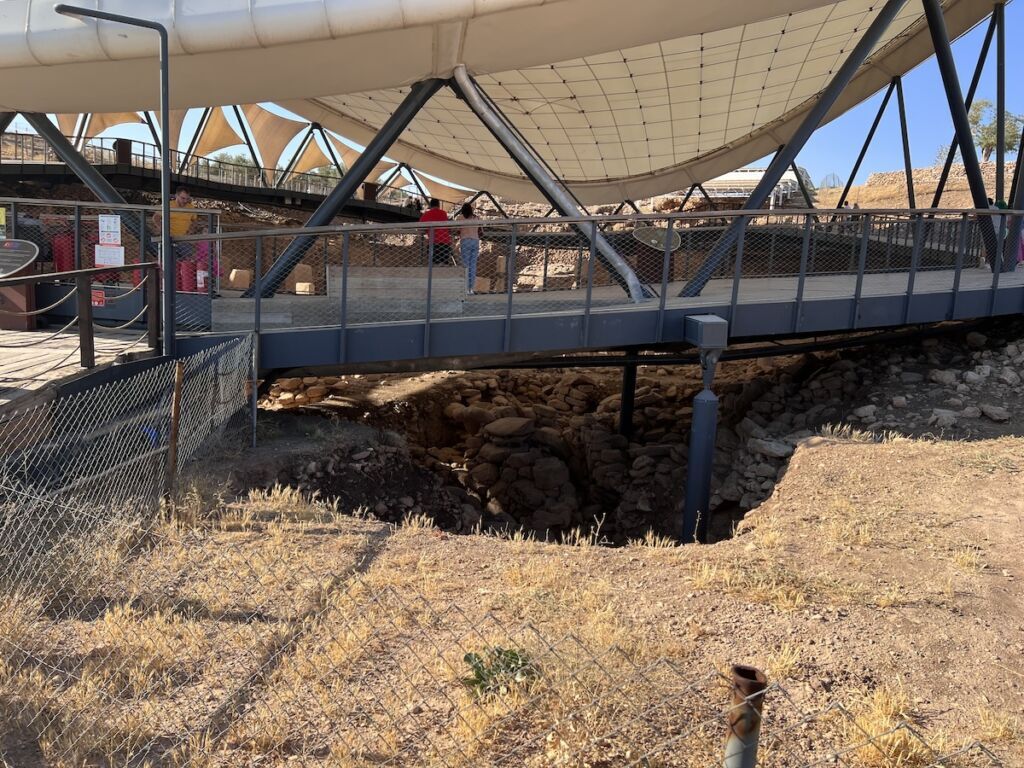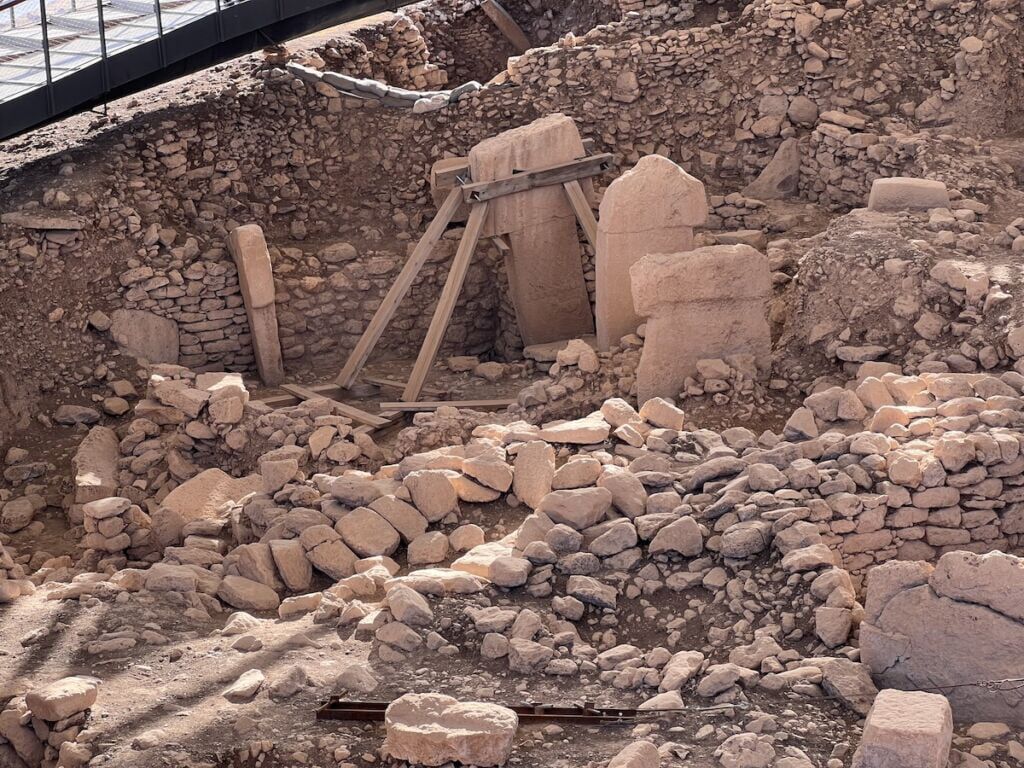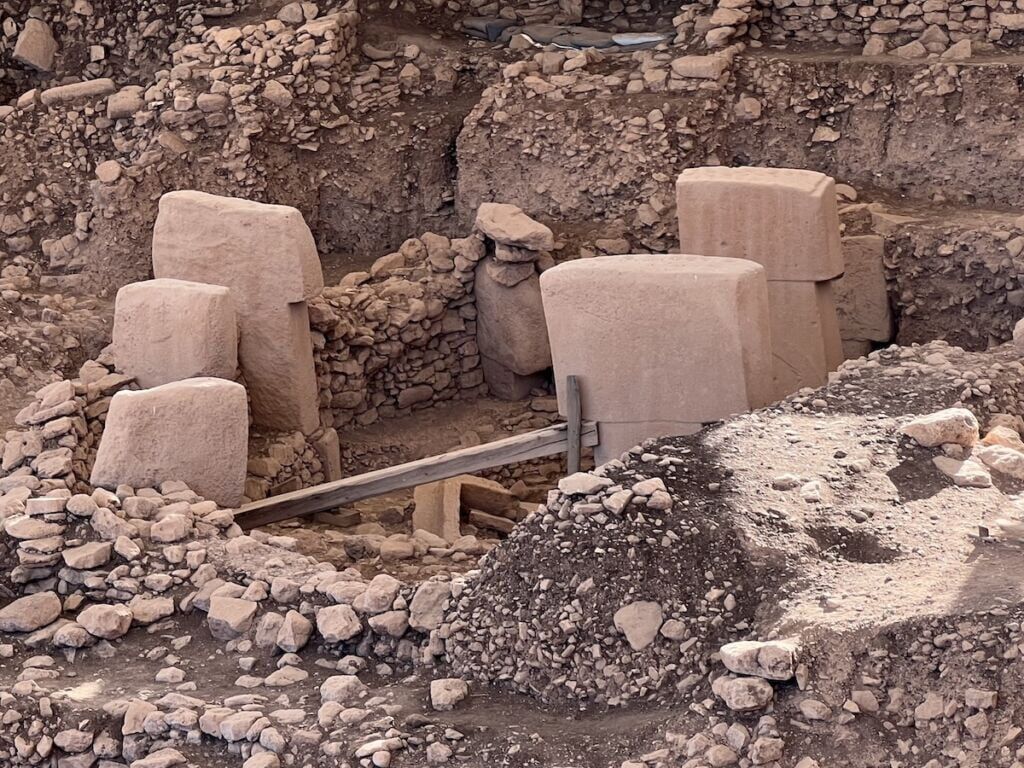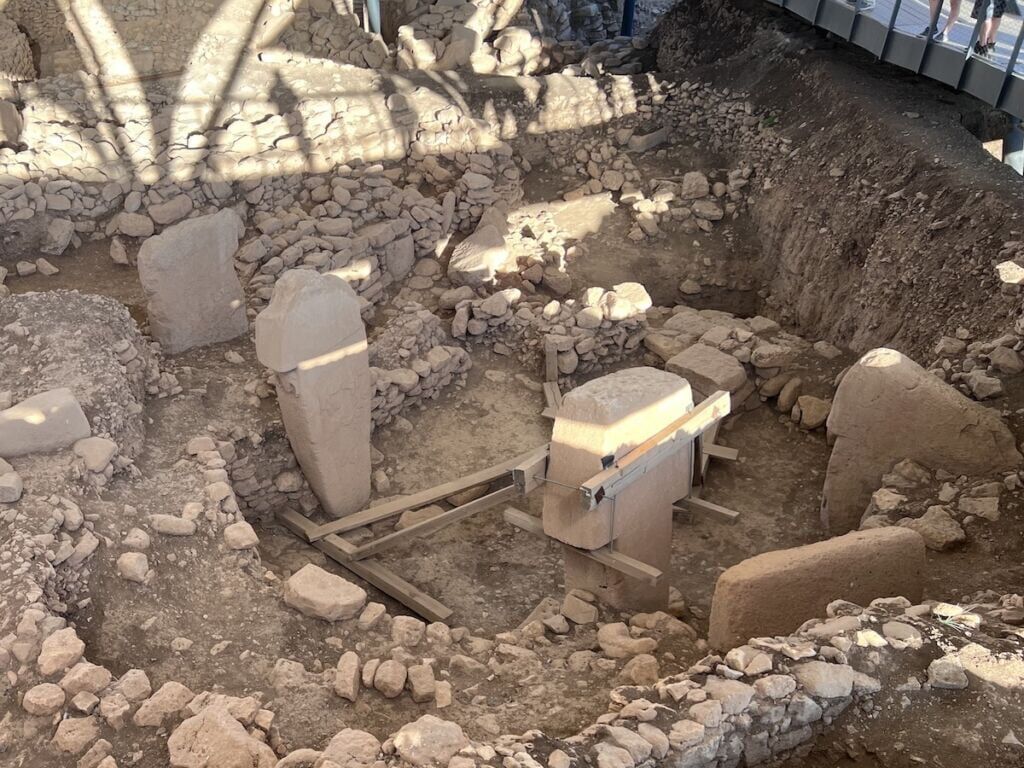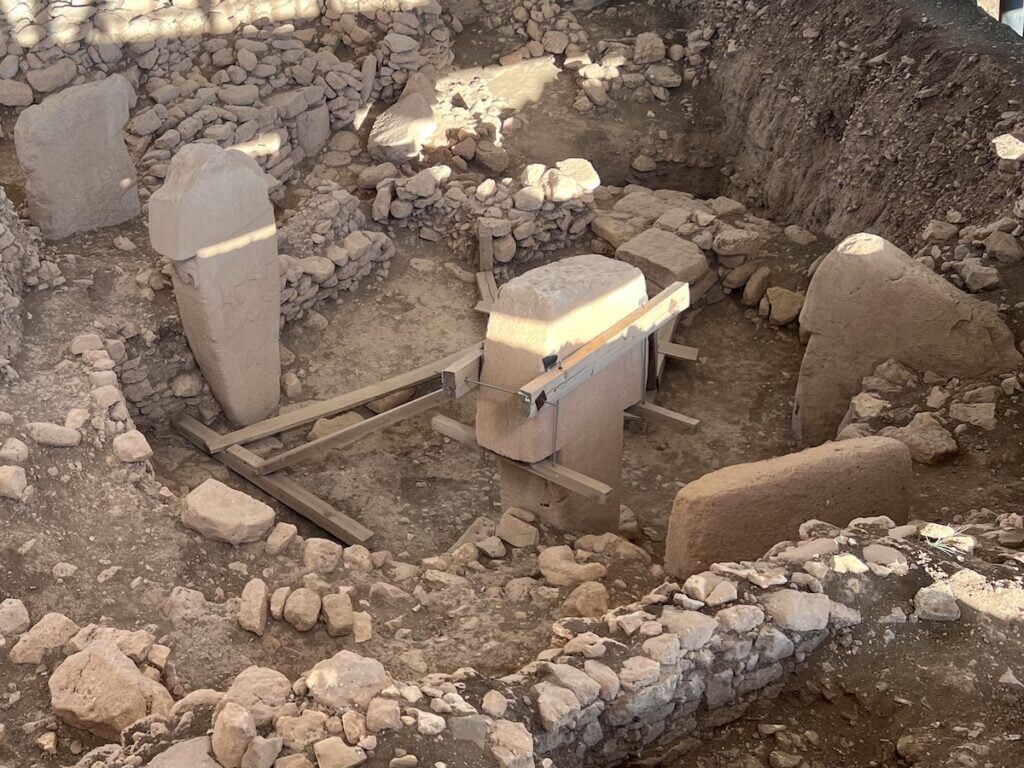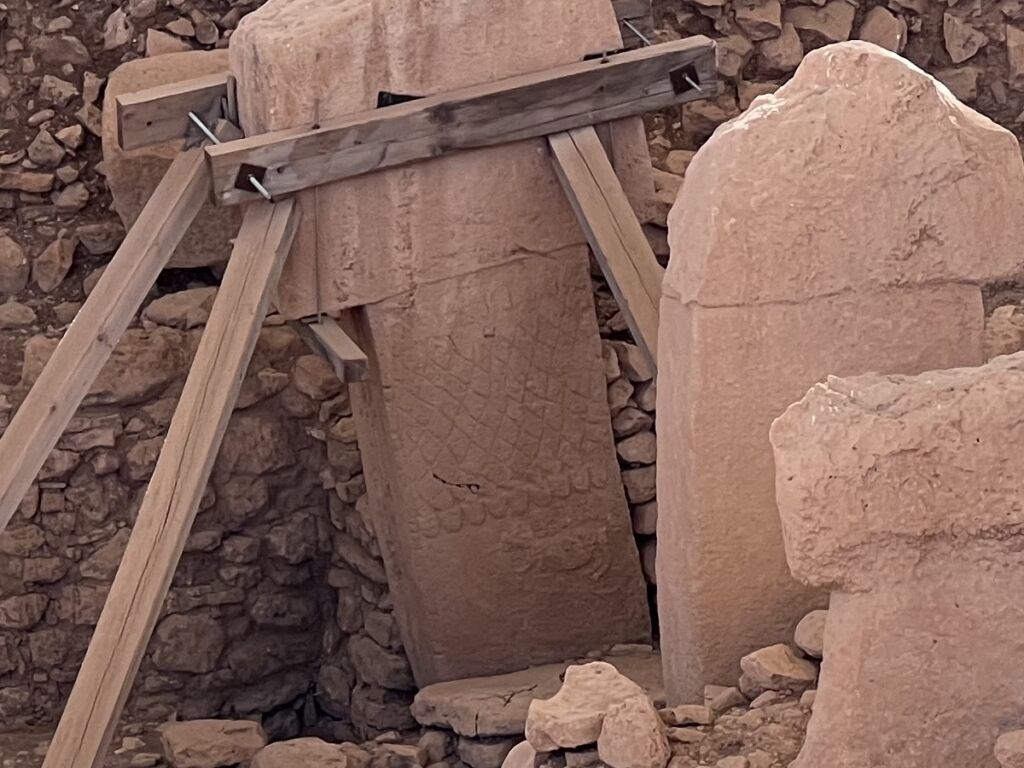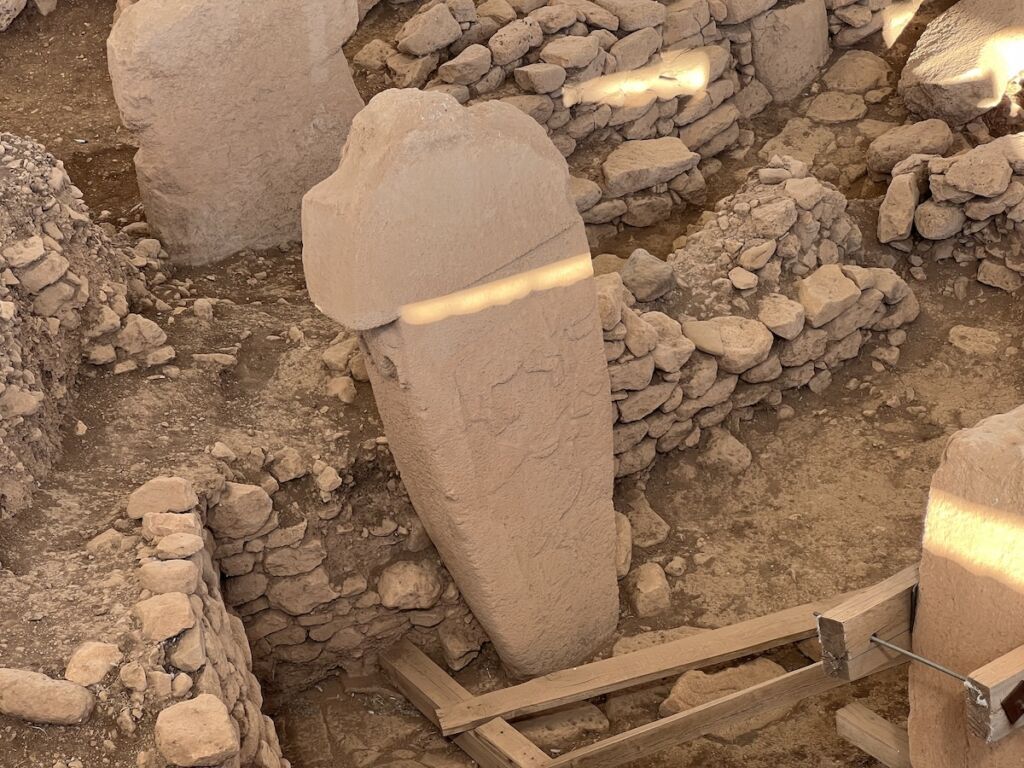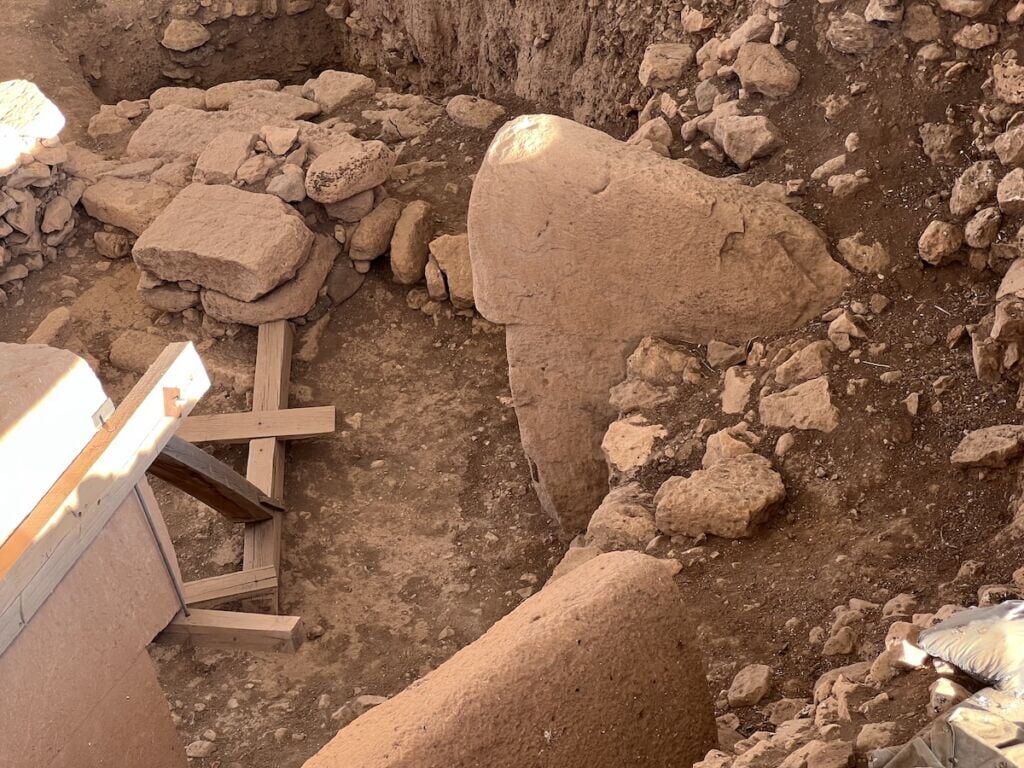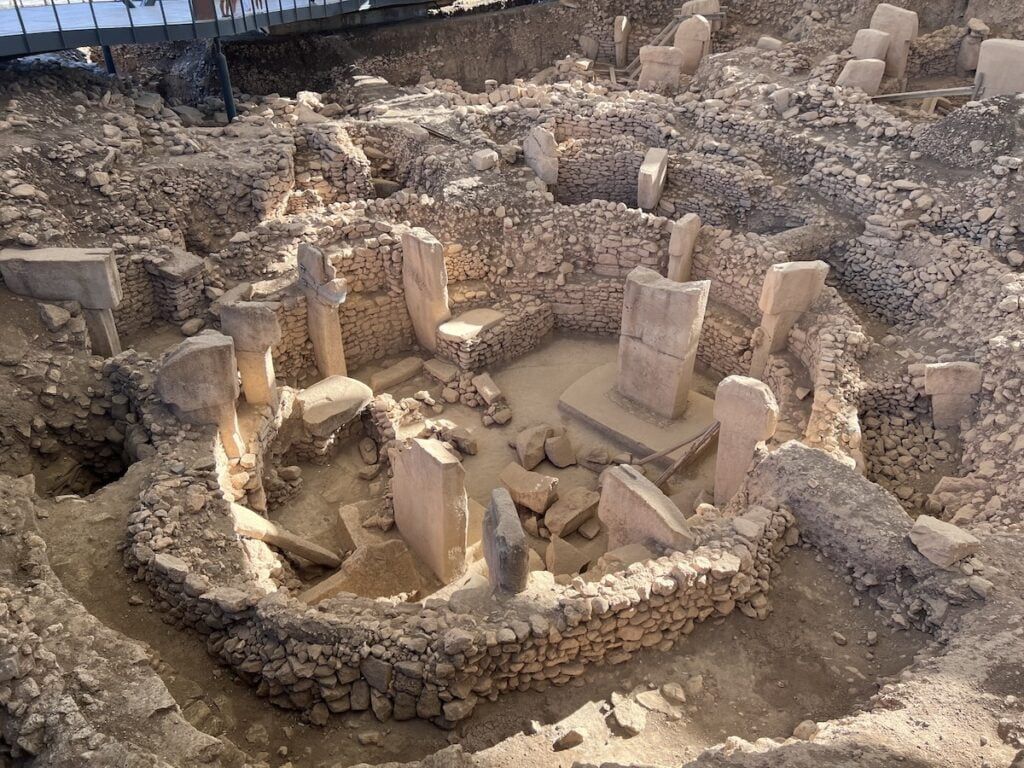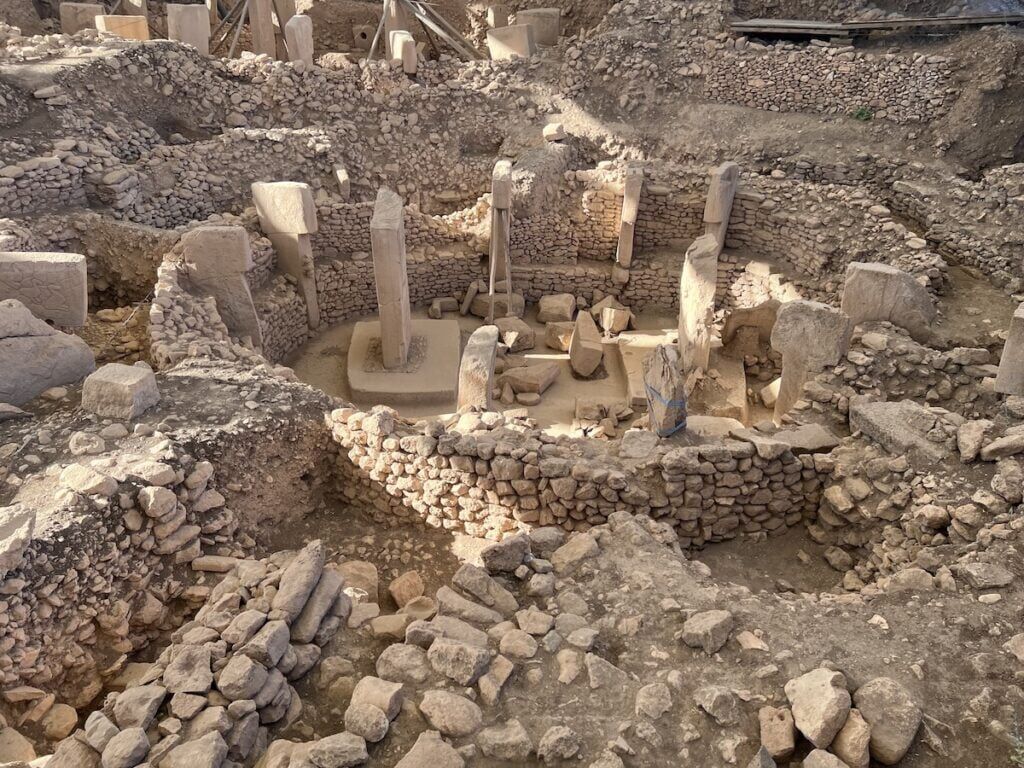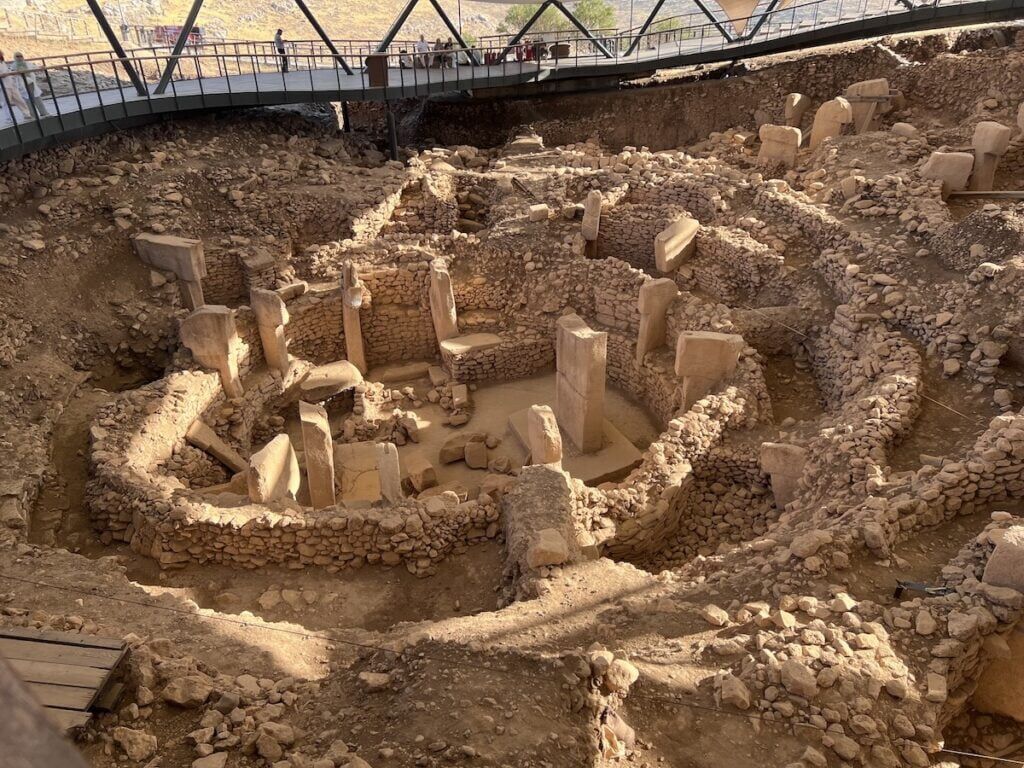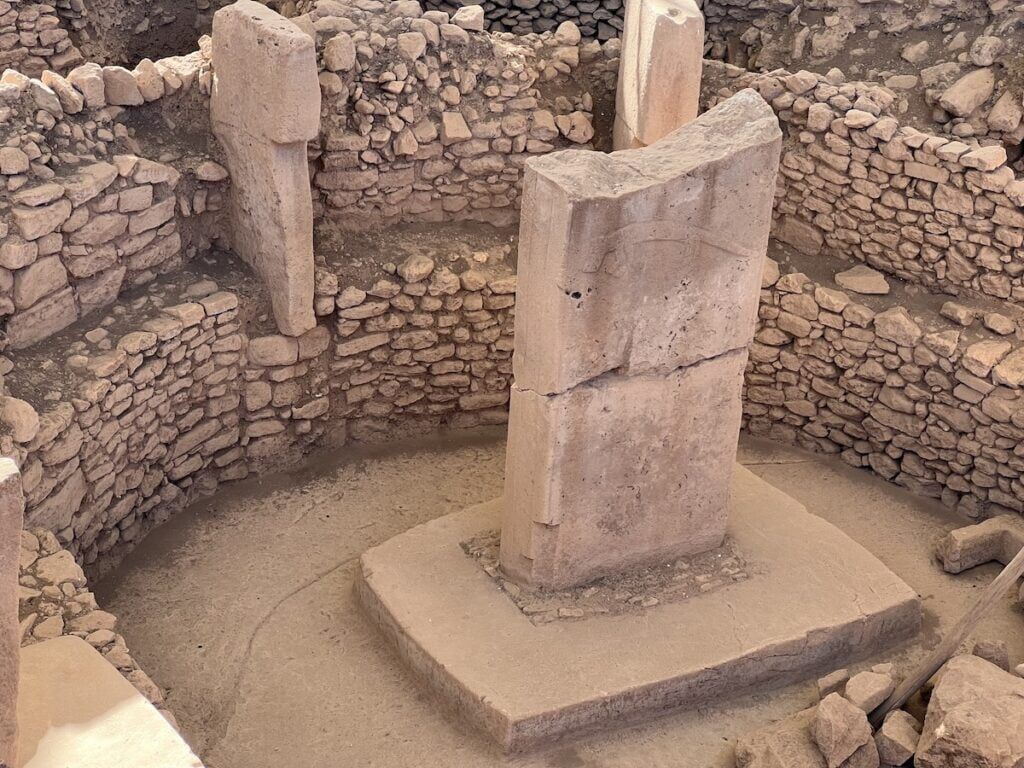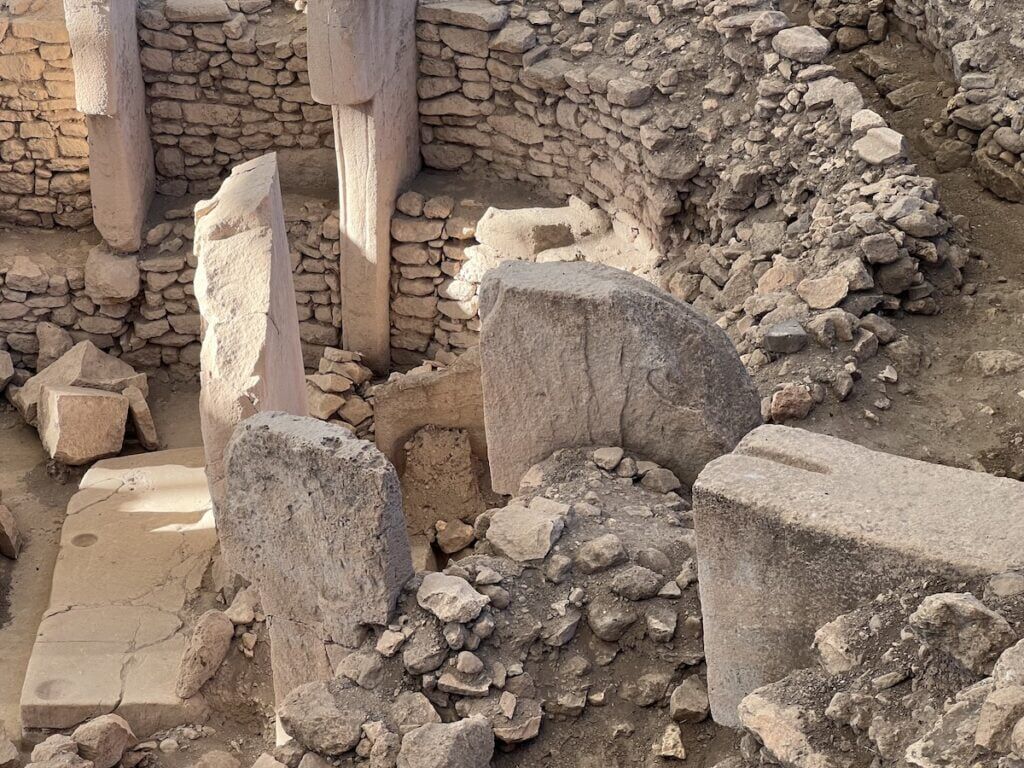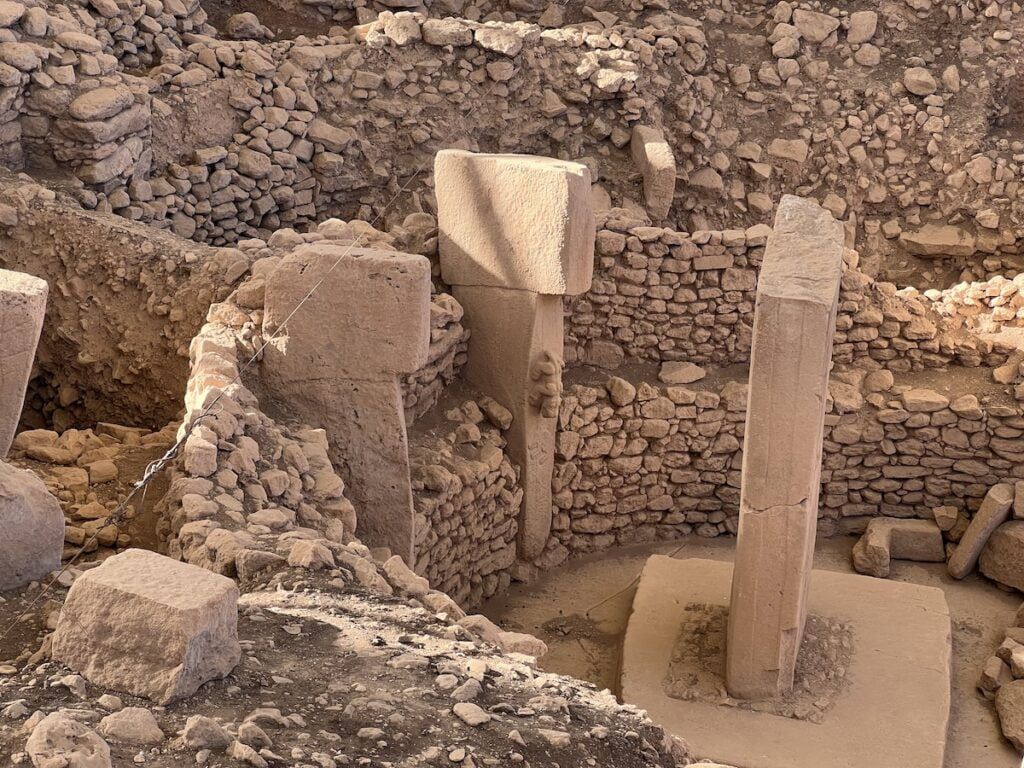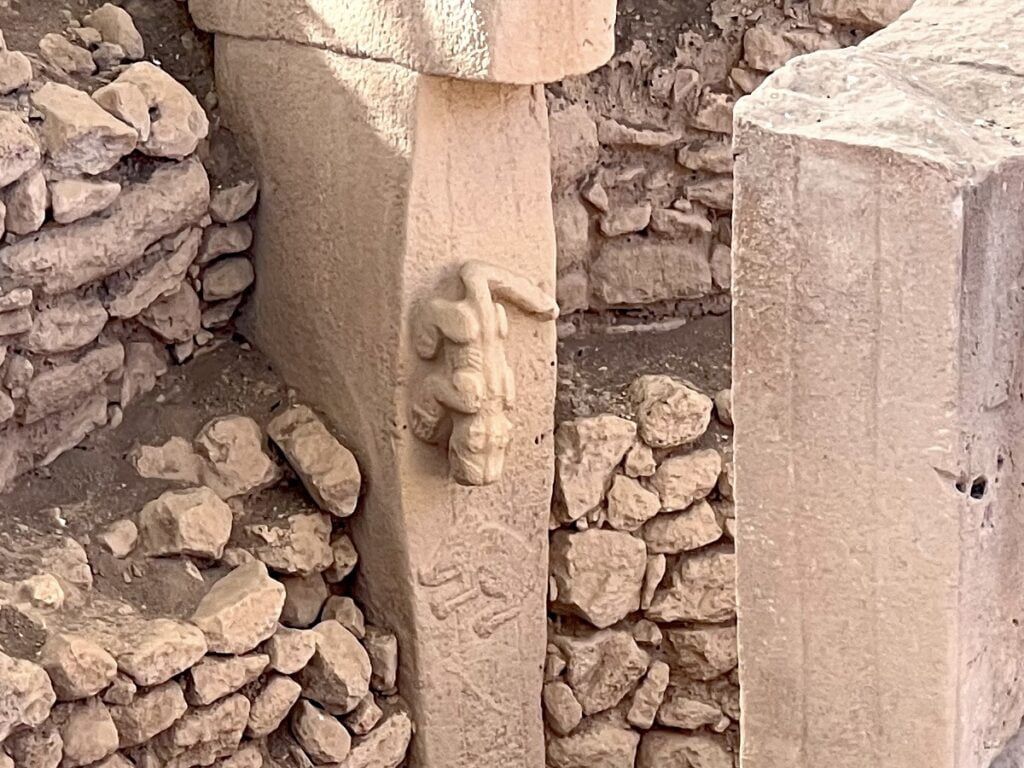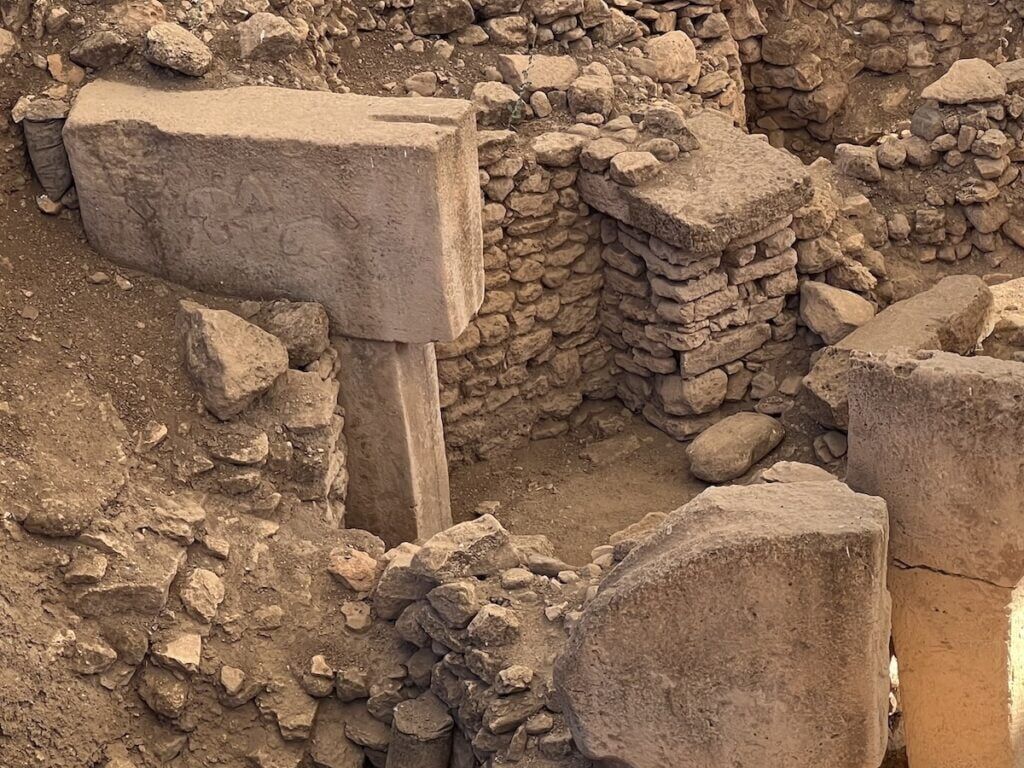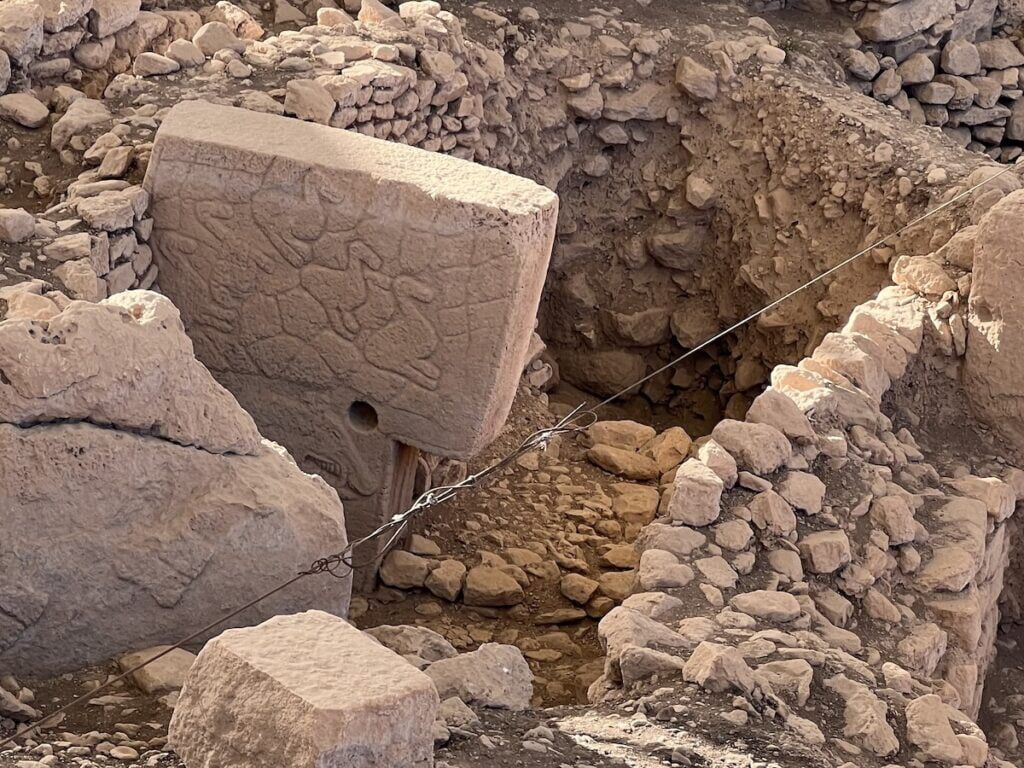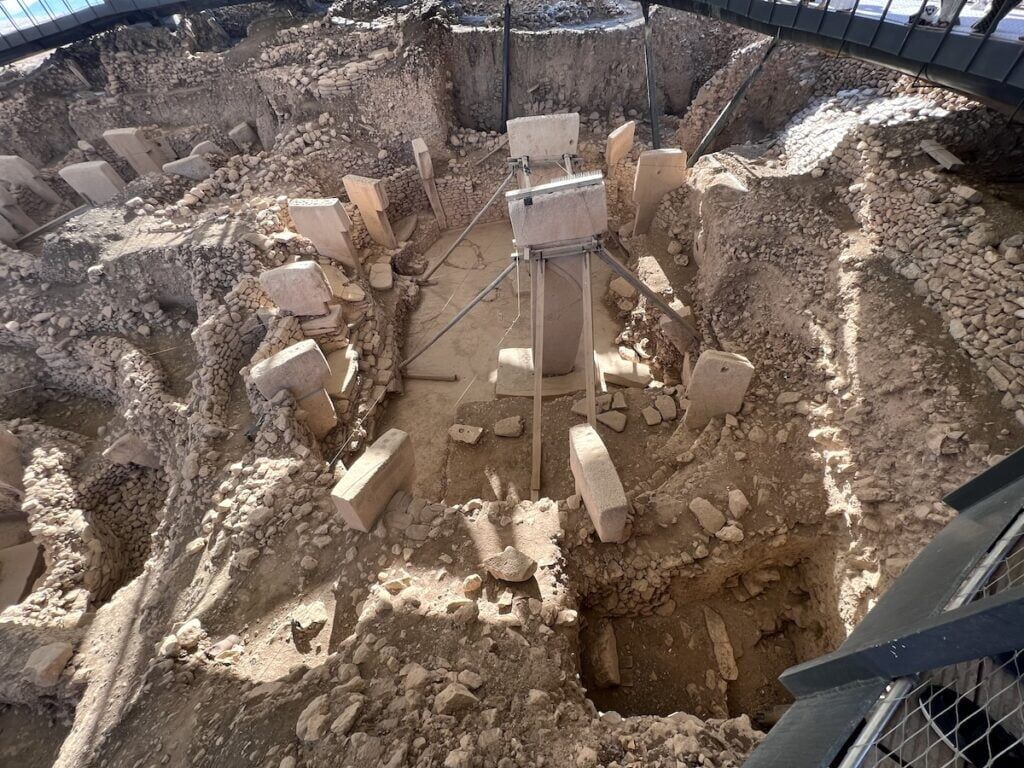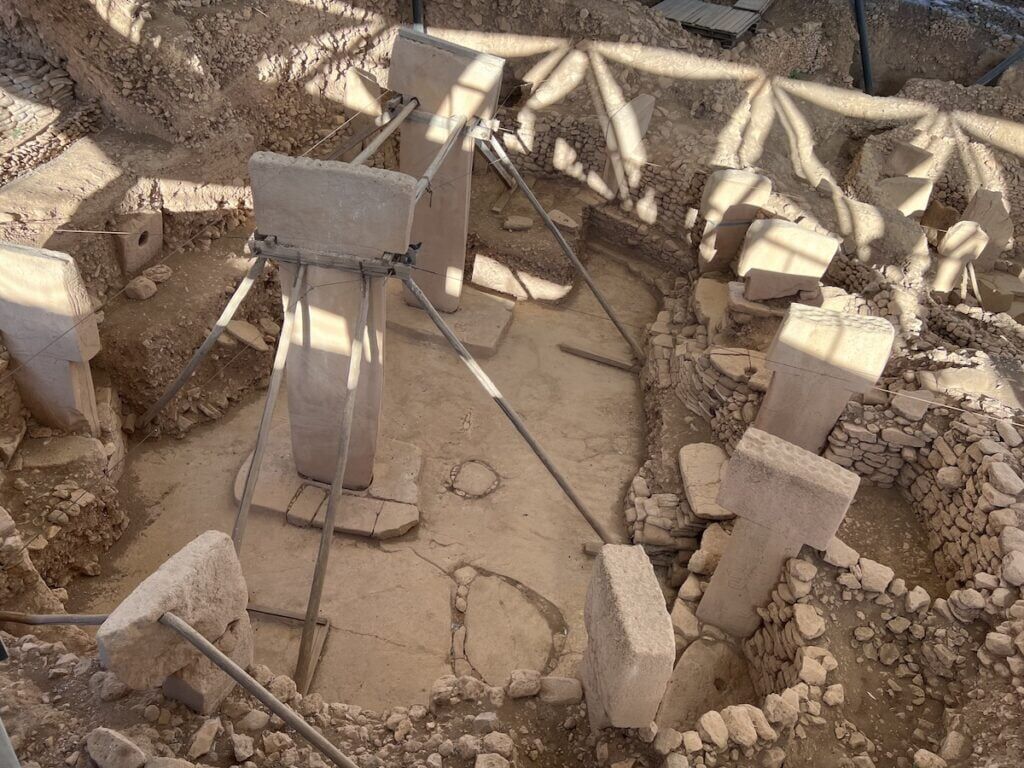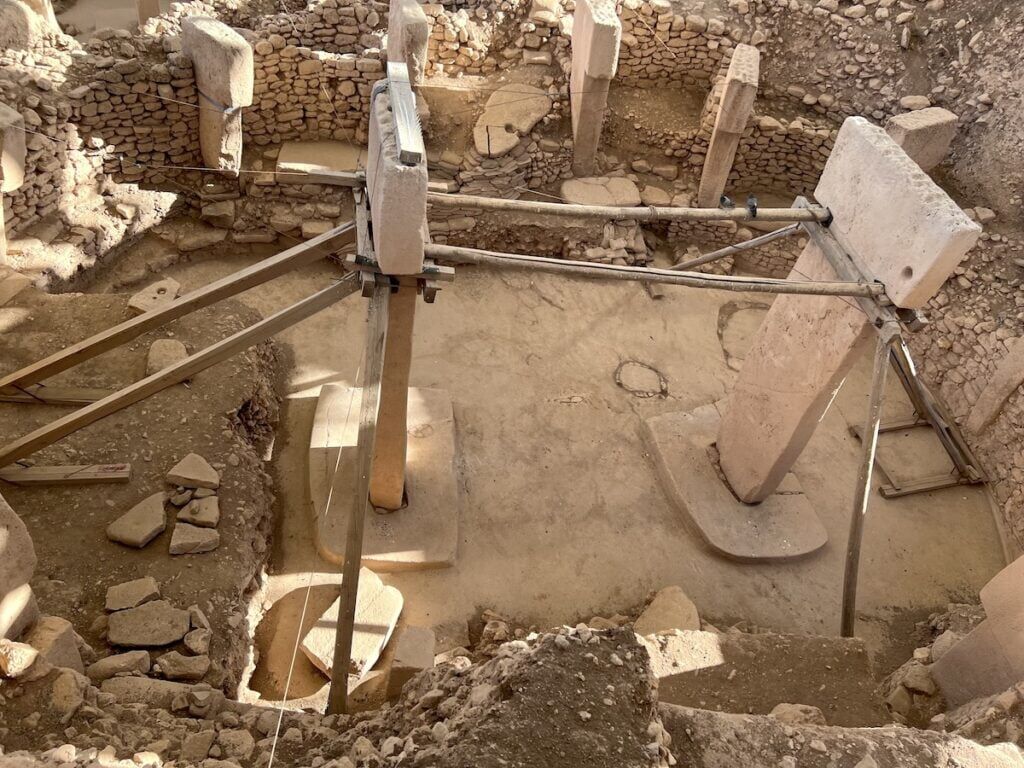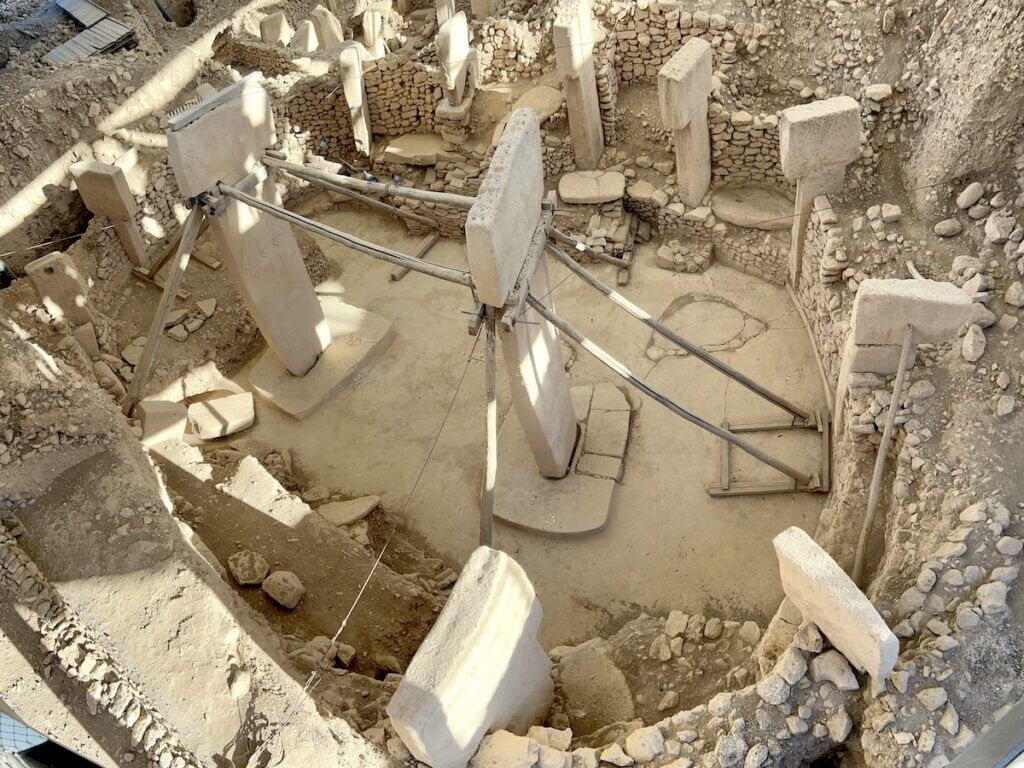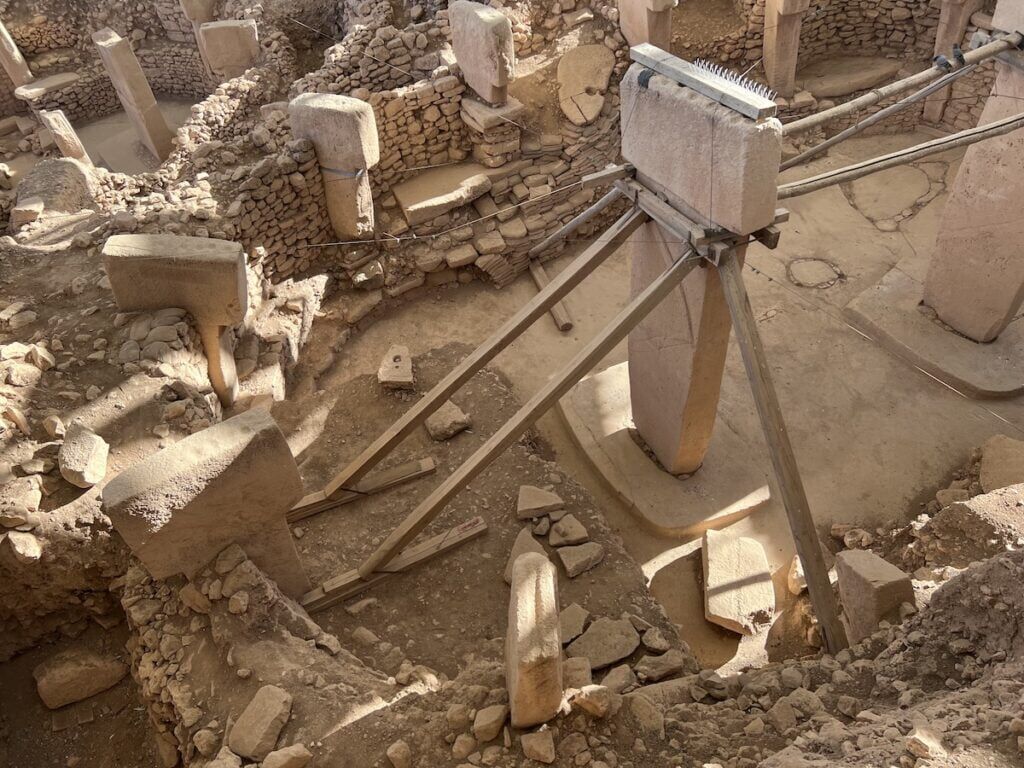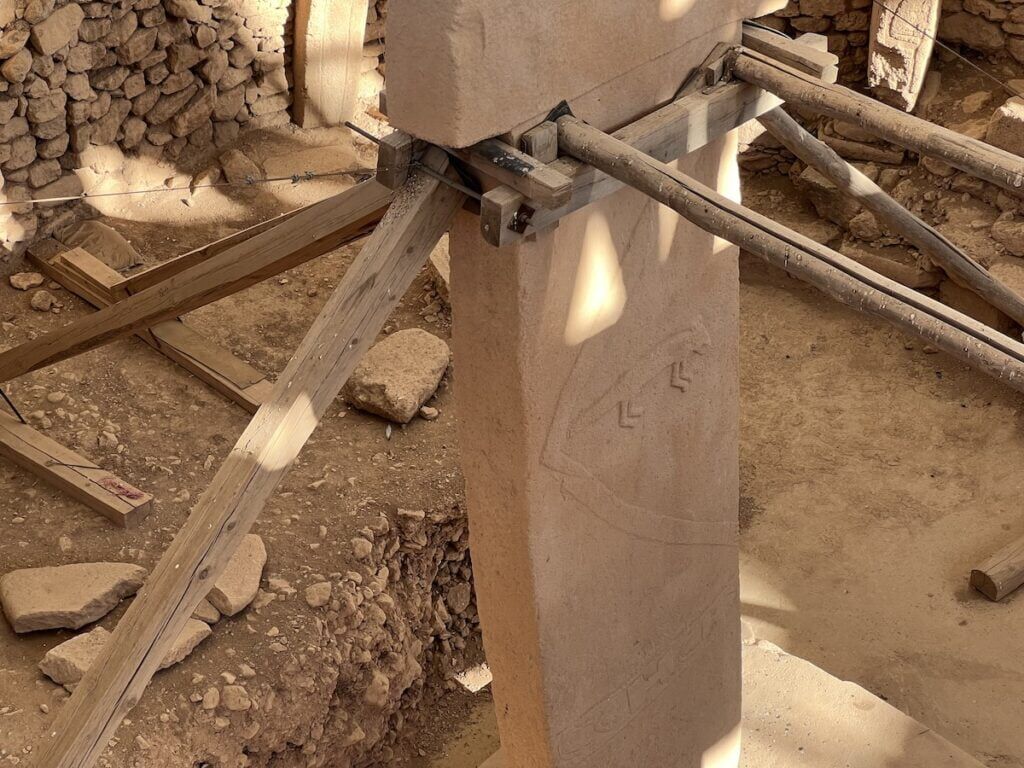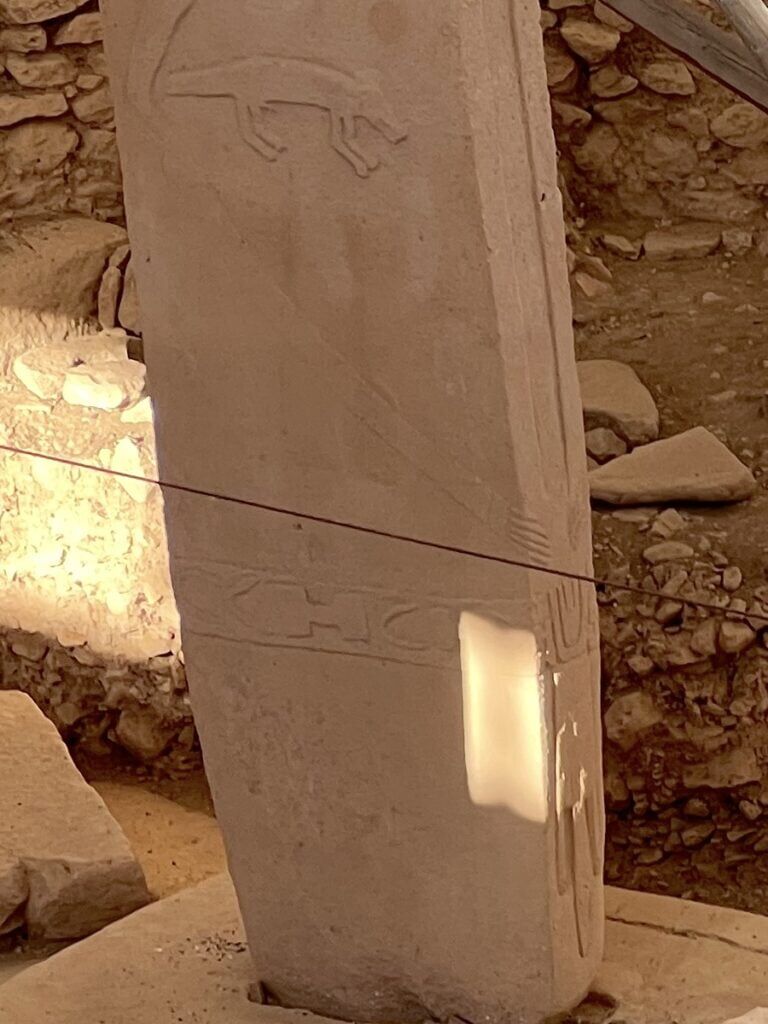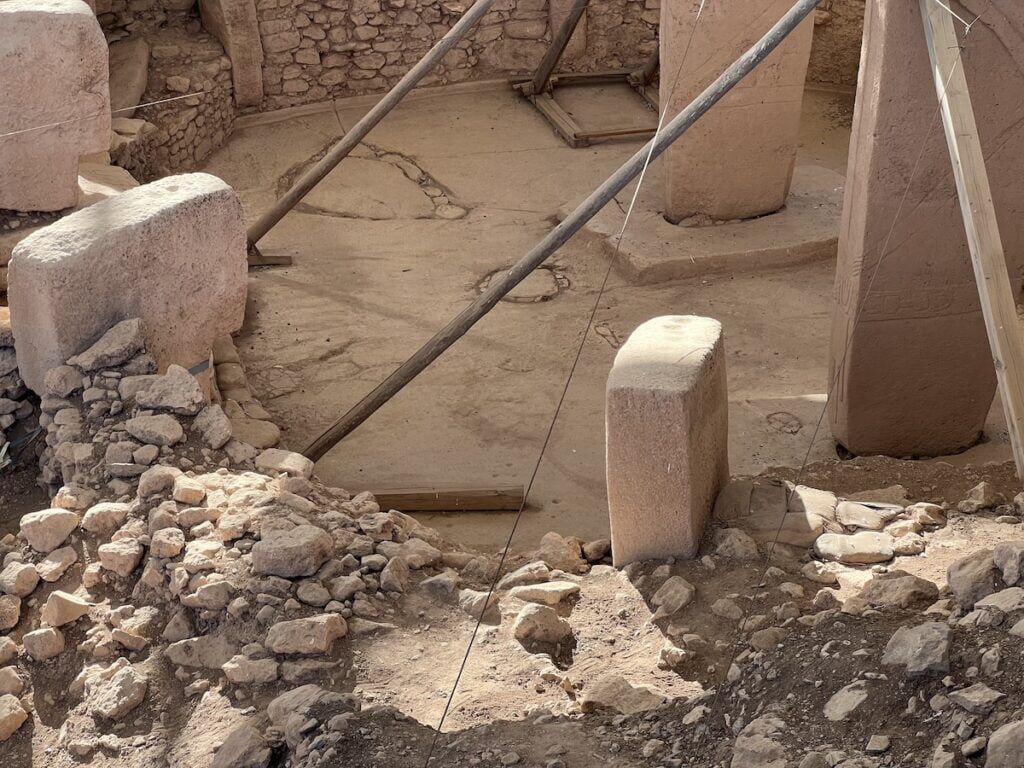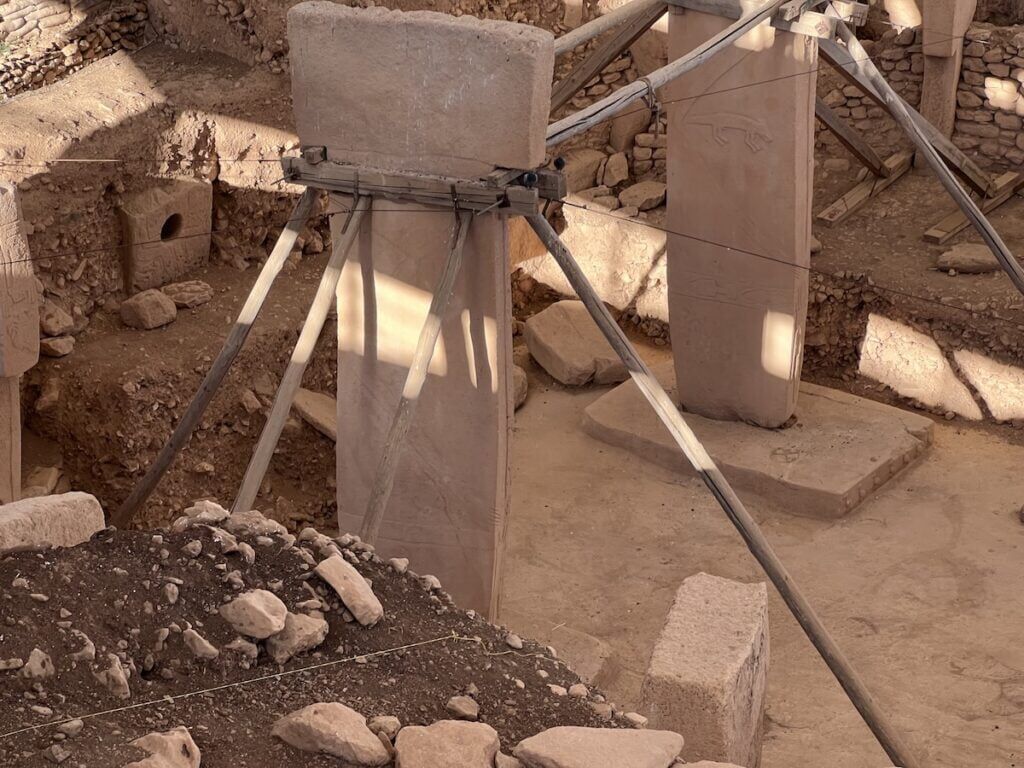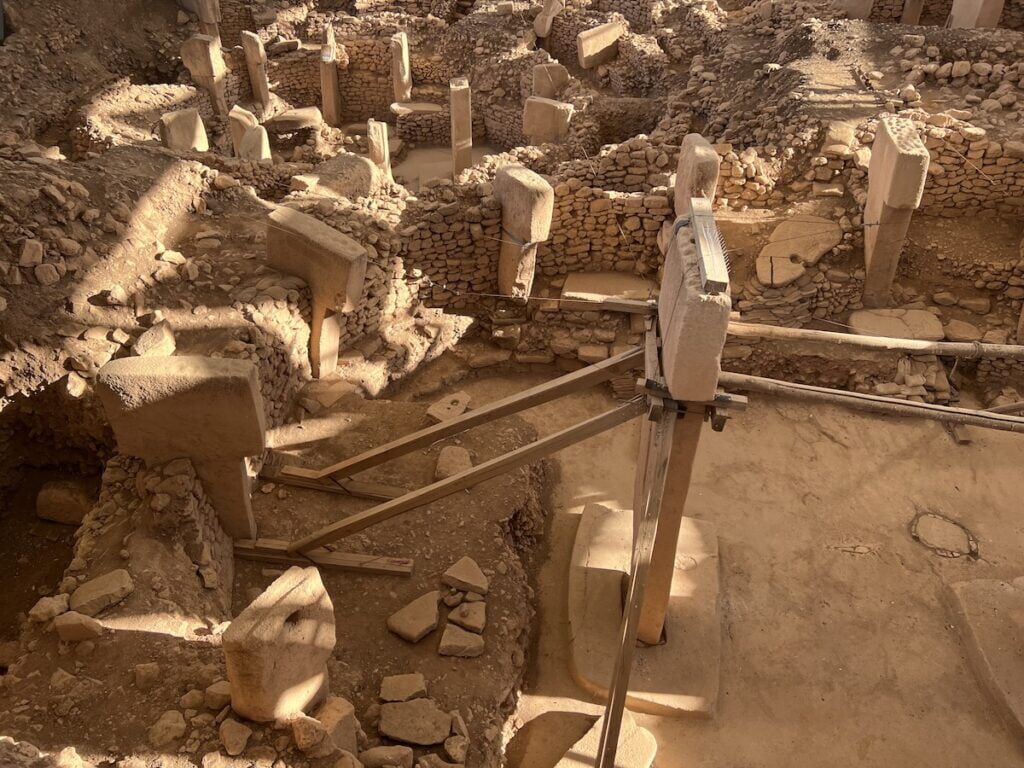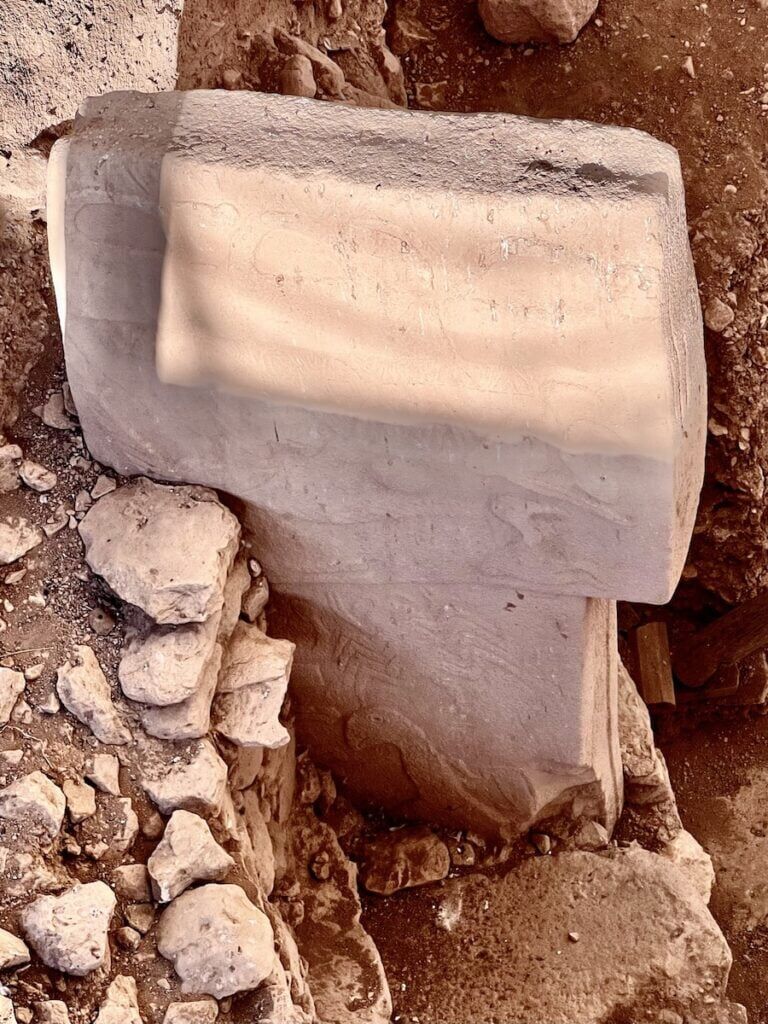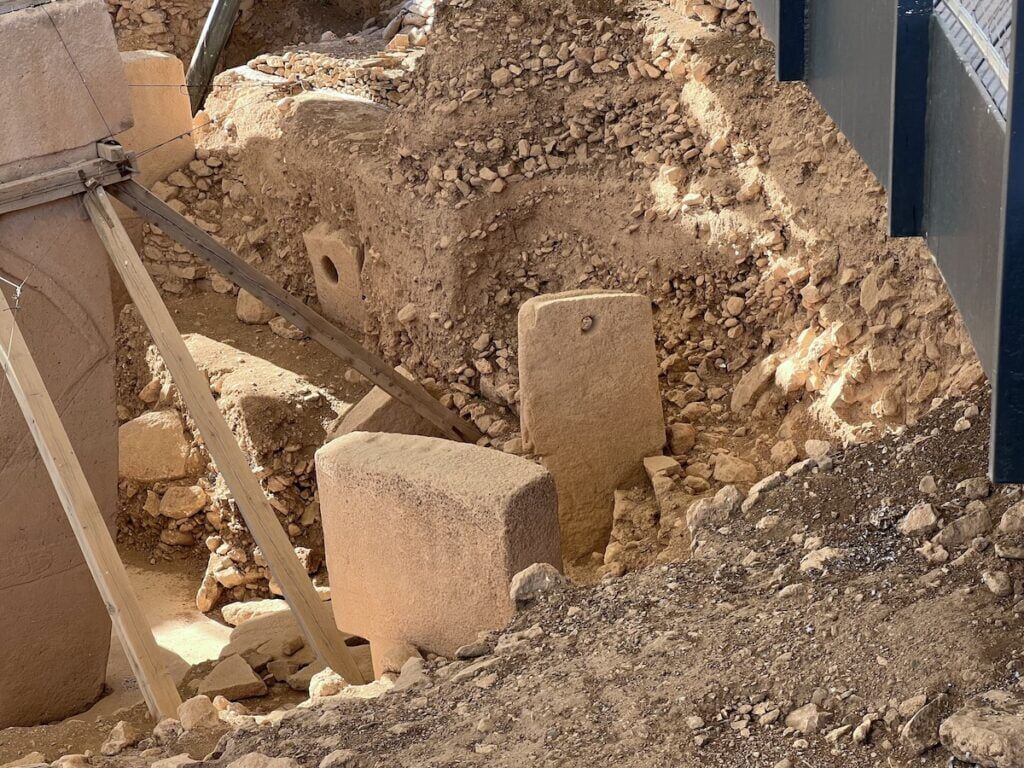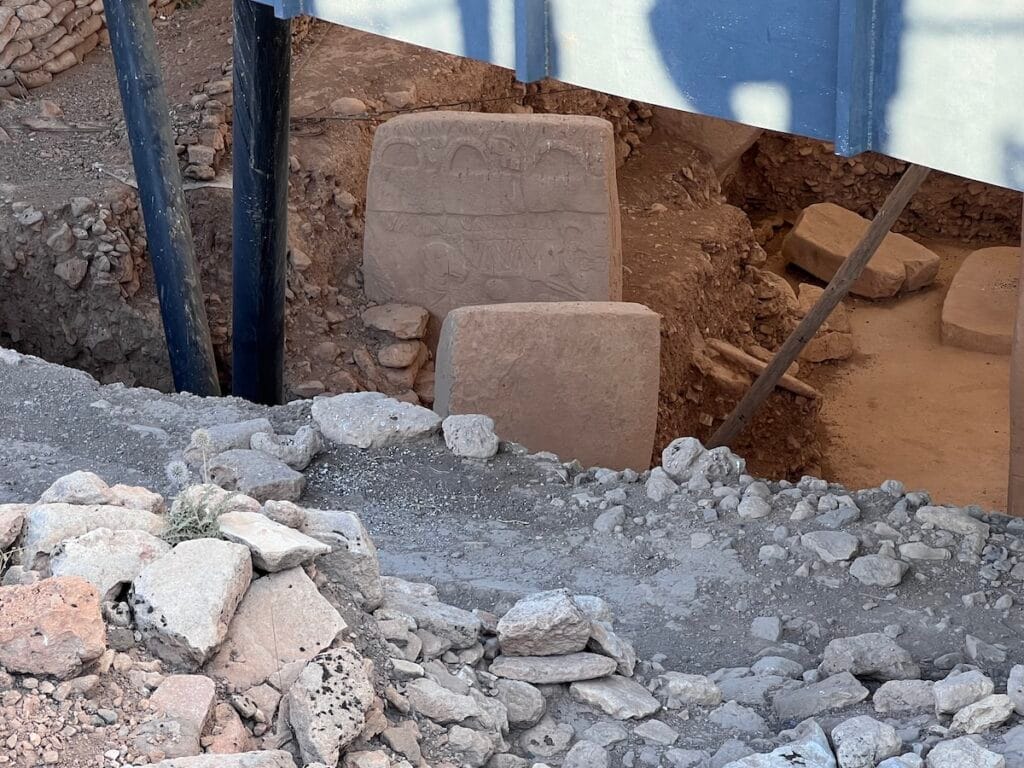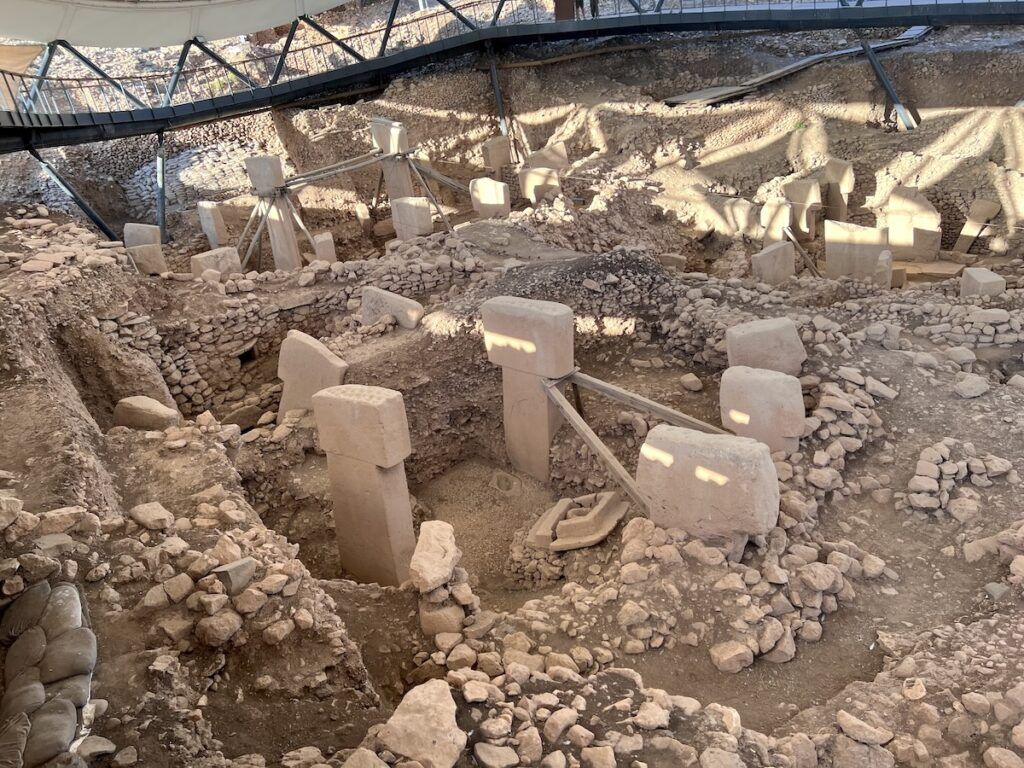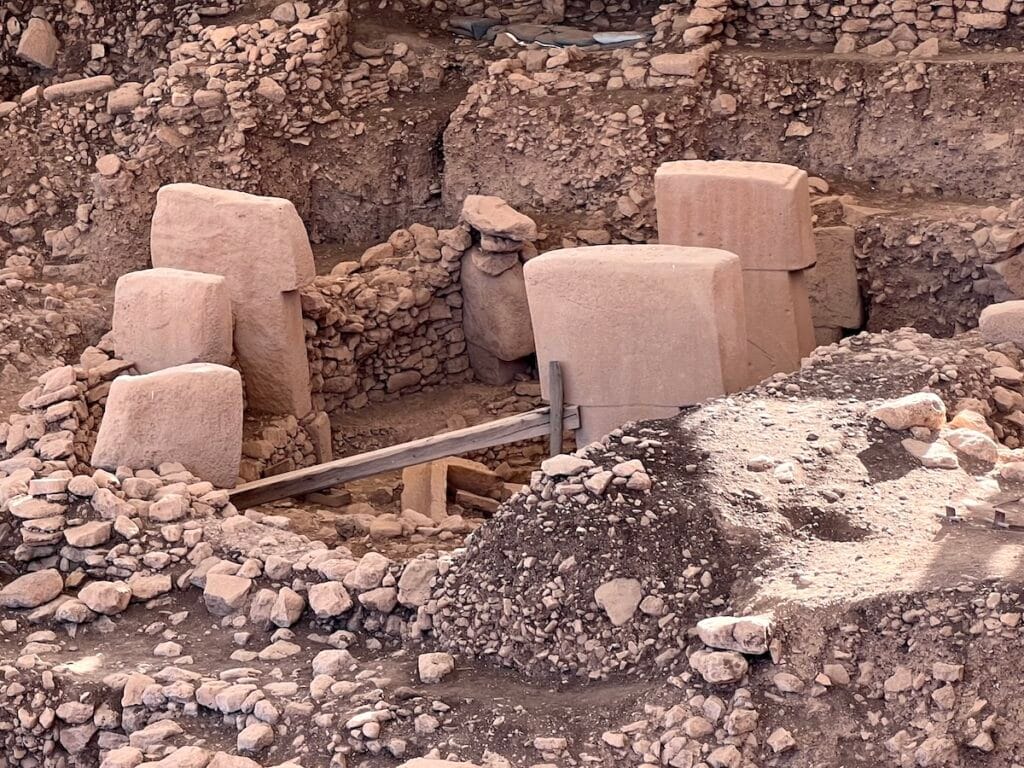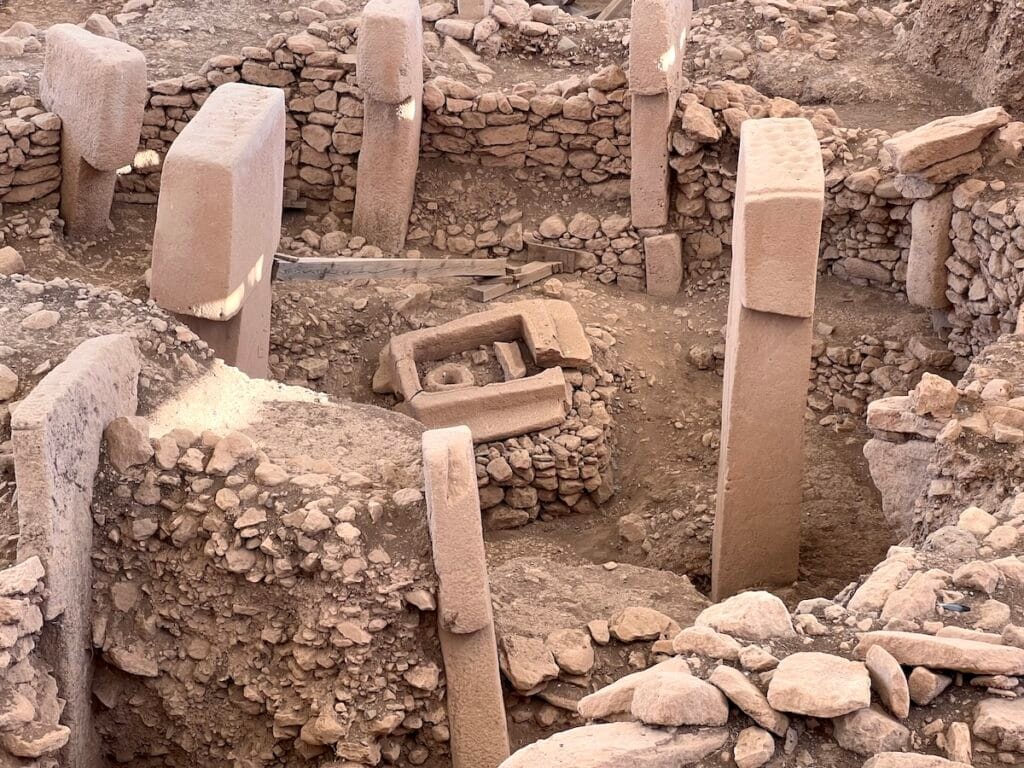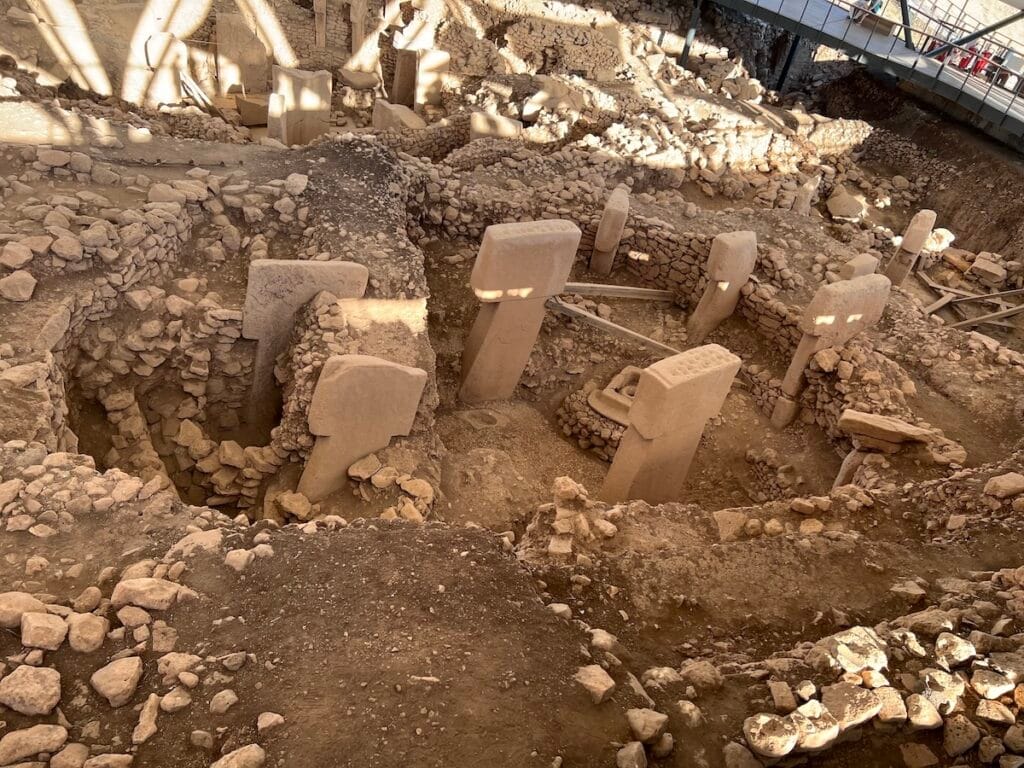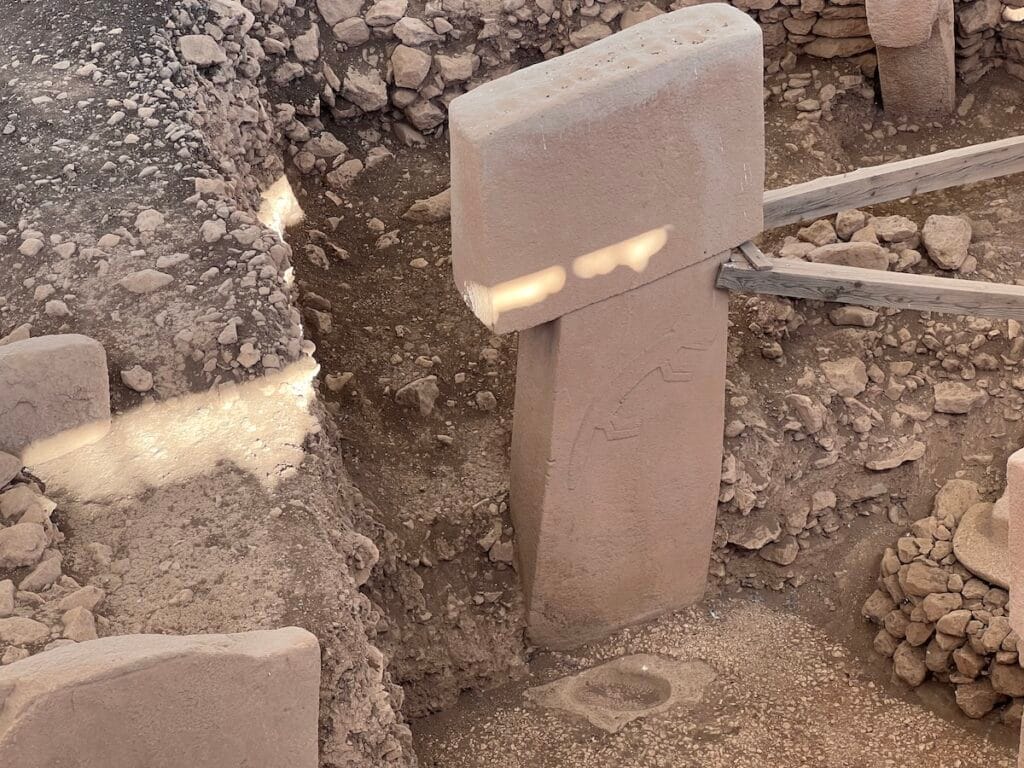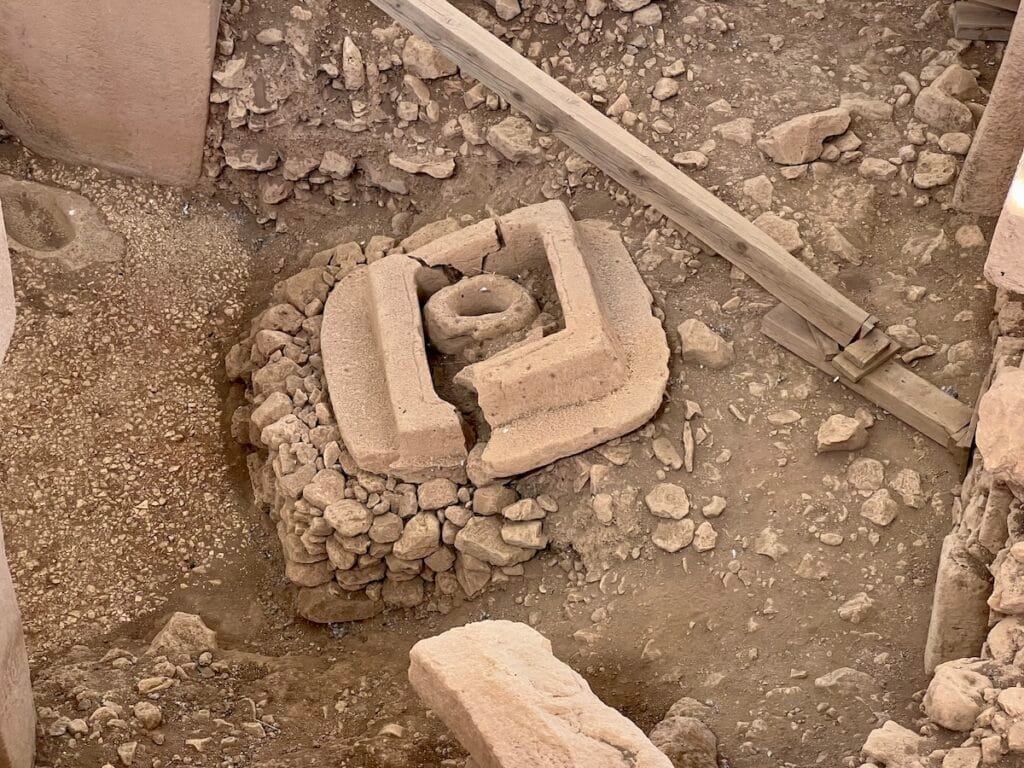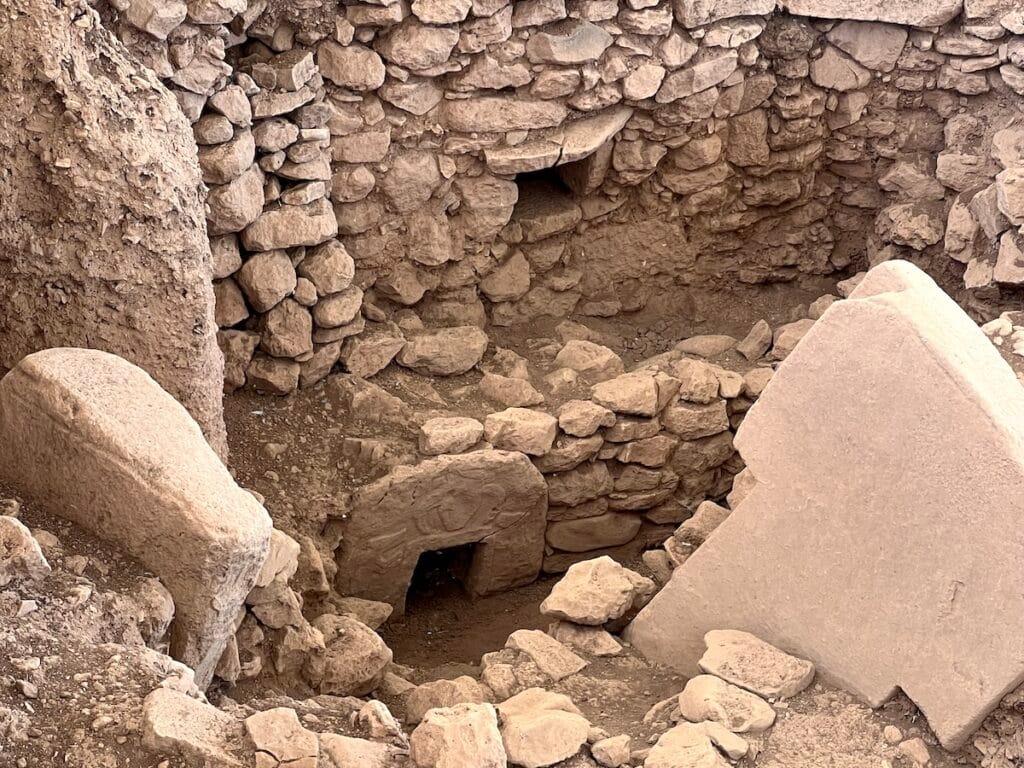Exploring 7 Fascinating Sites on the Gobekli Tepe Tour
Have you ever been curious about how hunter-gatherers transformed into complex civilizations? Gobekli Tepe, the popular, enigmatic, 11,500 year old archaeological site in Turkey has rewritten what we though about ancient humans.
Göbekli Tepe, located on a hilltop in southeastern Turkey, stands as a testament to the ingenuity of our ancient ancestors. This prehistoric site from the Holocene is often referred to as the world’s first temple and challenges our understanding of early human civilization. Göbekli Tepe offers a glimpse into a time when hunter-gatherer societies came together to build monumental structures before the advent of agriculture.
Lets explore this strange, yet compelling site that predates Stonehenge by thousands of years
Mon, Sep 12: Gobekli Tepe, Sanliurfa, Turkey
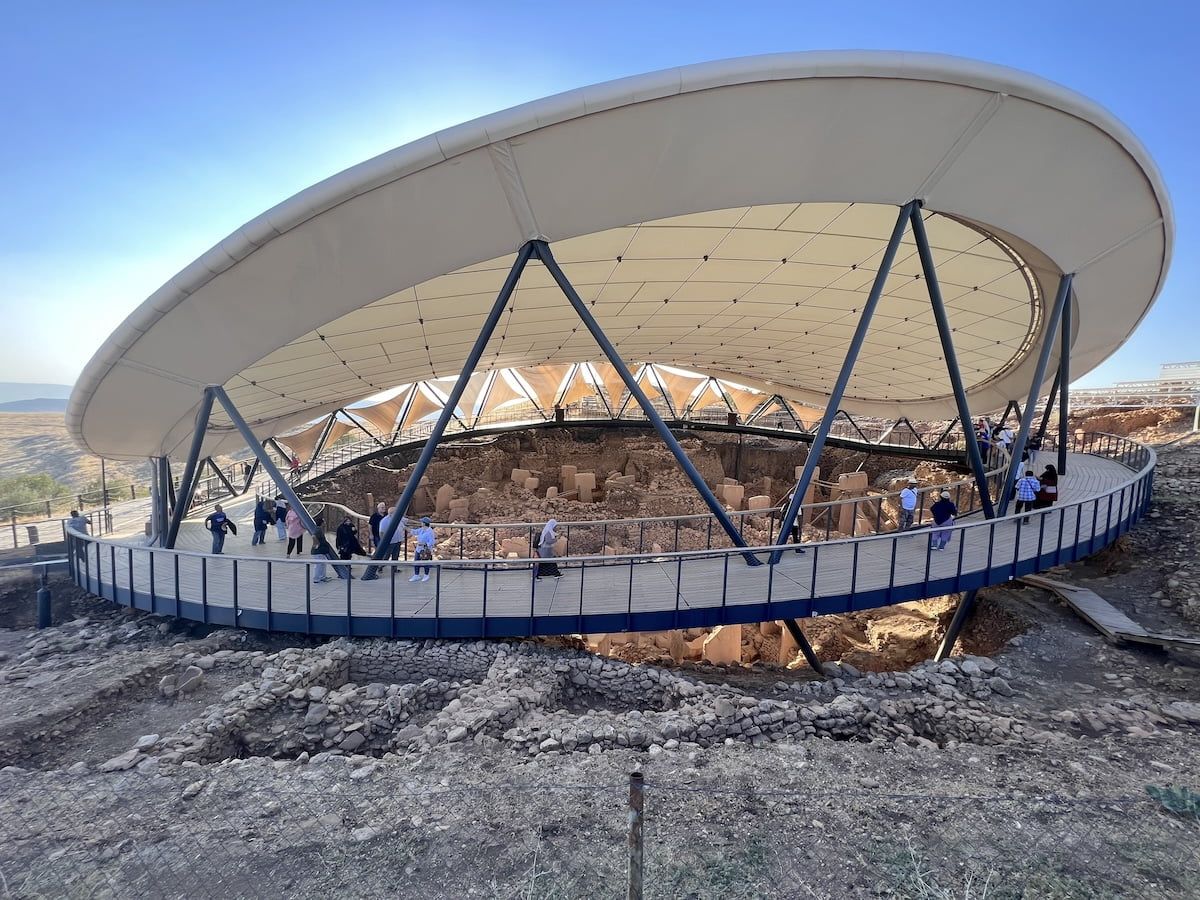
How old is Gobekli Tepe?
Göbekli Tepe dates back to around 9600 BCE, making it over 11,600 years old, and its construction coincides with the end of the Younger Dryas period, a time of significant climatic upheaval. This predates the advent of agriculture and the construction of Stonehenge by several thousand years, making it one of the earliest known megalithic sites in human history.
Who built Göbekli Tepe?
Göbekli Tepe was built by early hunter-gatherers, showcasing their advanced construction capabilities long before the advent of agriculture. Recent theories suggest that the construction might have played a pivotal role in the transition to agricultural societies, as the need to organize large groups for building projects could have led to more settled communities. Thus, Göbekli Tepe not only represents a remarkable achievement of early humans but also possibly catalyzed the agricultural revolution.
Taking a Tour of Gobekli Tepe
Your first encounter on touring Gobekli Tepe is the a small guard station that collects a parking fee. 25 Turkish Lira. Then a short walk to the Visitor Center to begin the tour.
Inside the Gobekli Tepe Visitor Center
The Göbekli Tepe visitor center features informative exhibits that provide context about the site’s discovery, history, and significance. It includes detailed displays and replicas of some of the site’s most intricate carvings, like the “Vulture Stone” from Enclosure D. There’s also a gift shop and cafe.

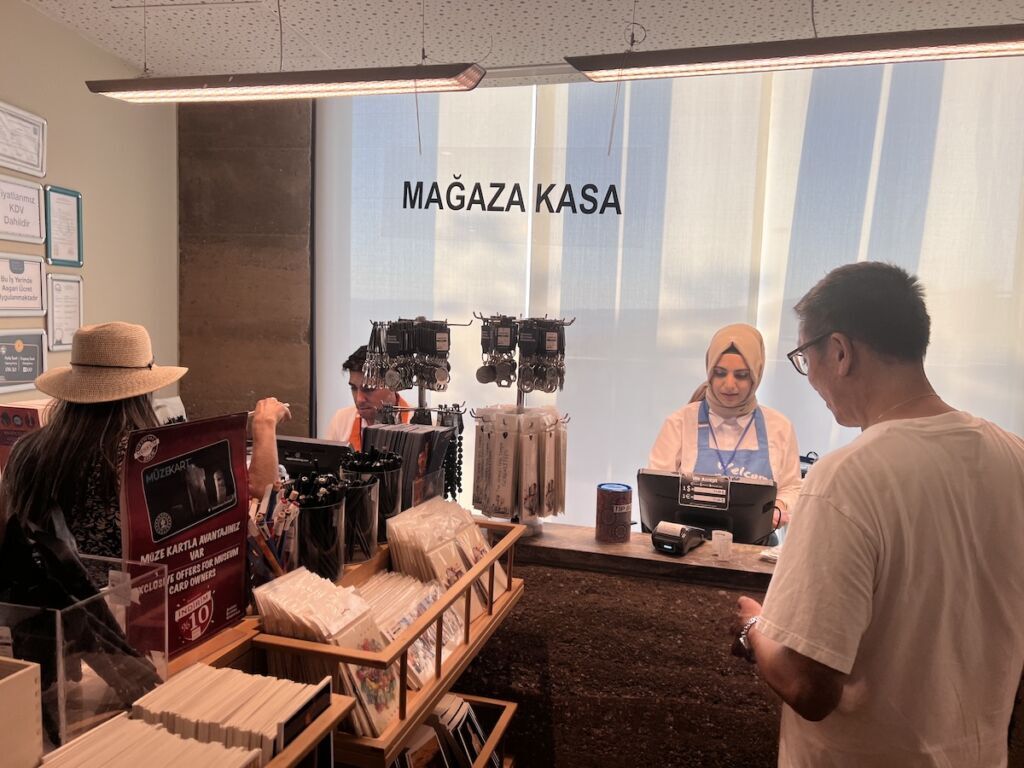
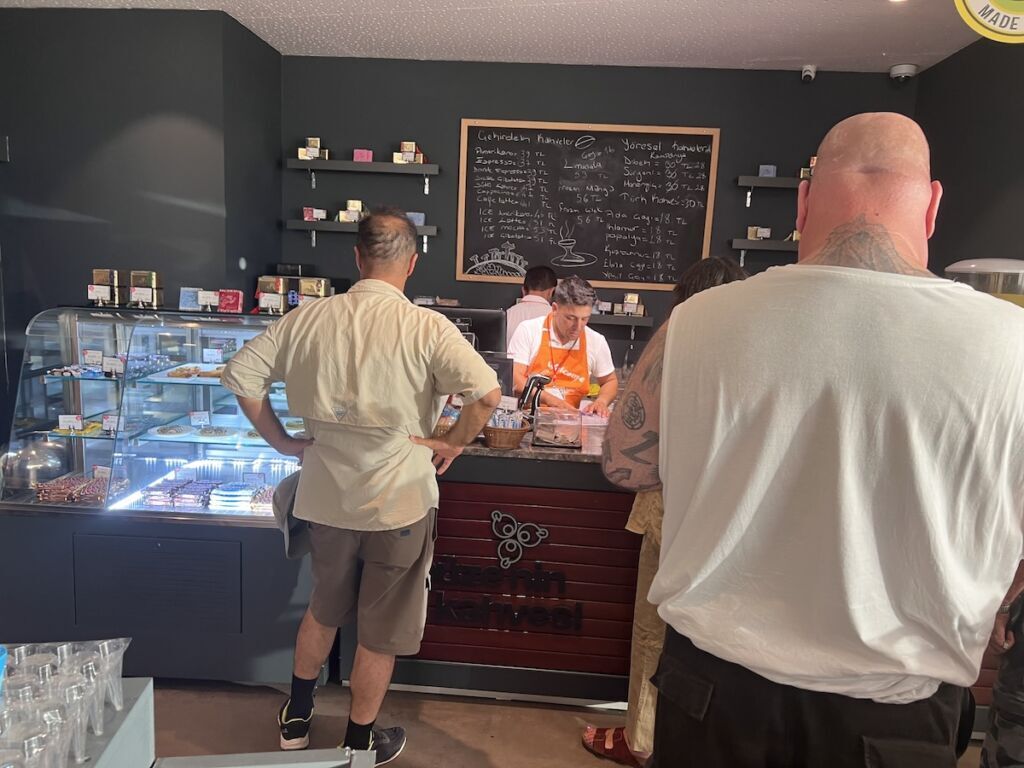
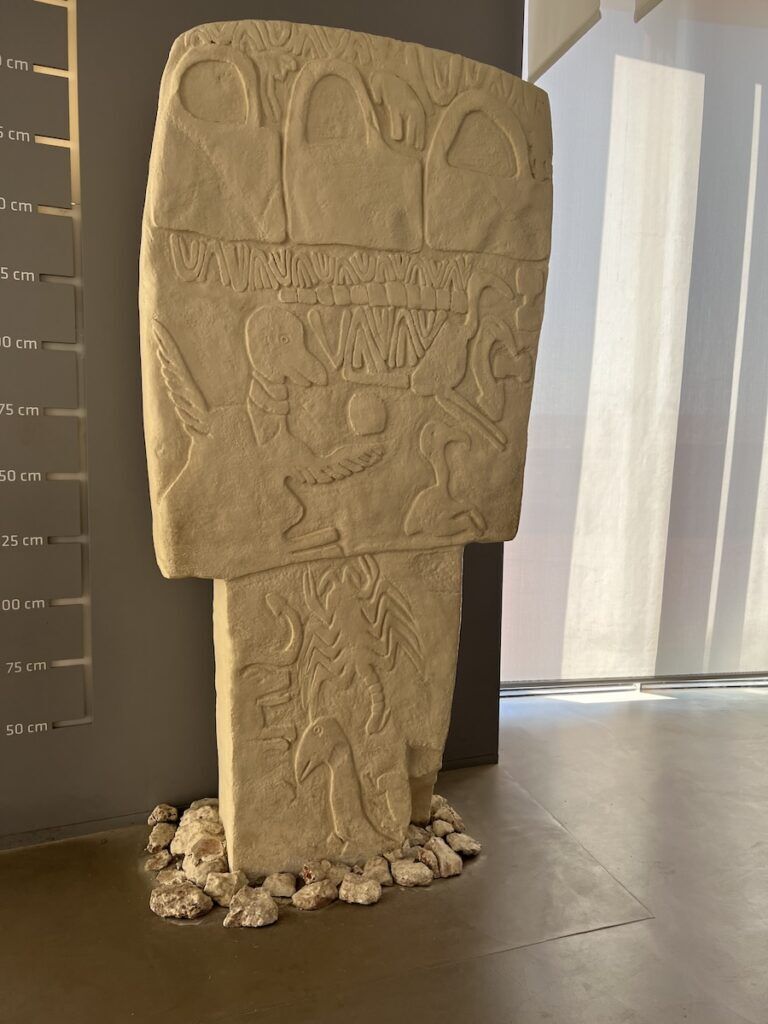
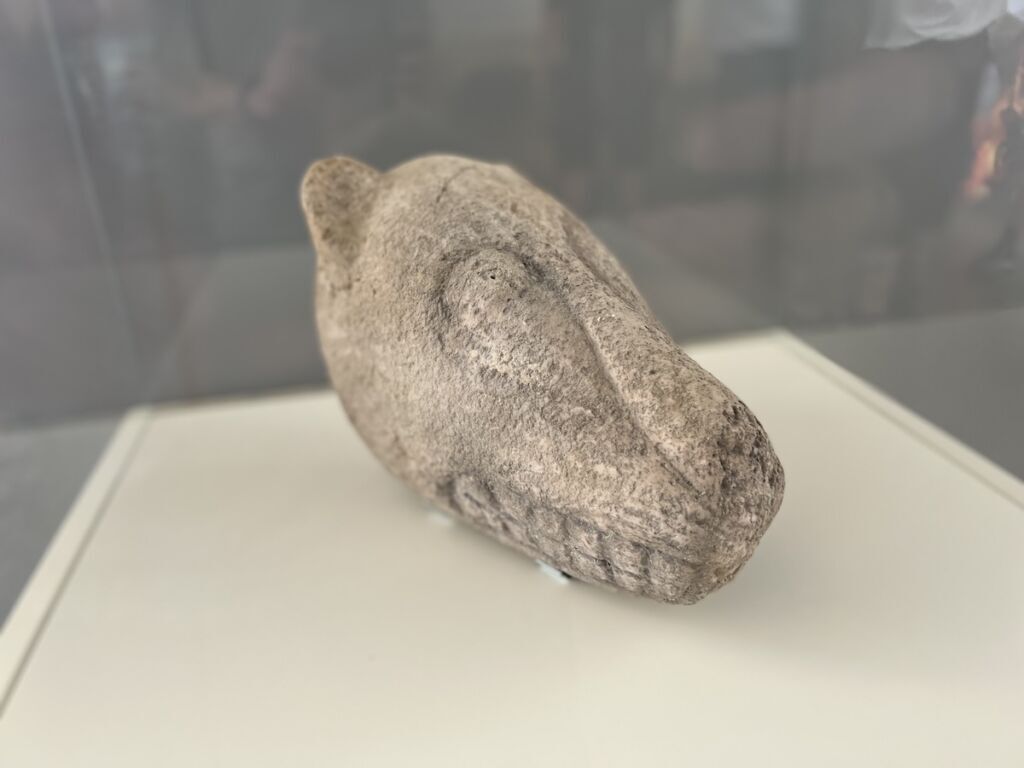

Walking the Path to Gobekli Tepe
Theres a path from the visitor center to the tent-covered main archaeological area at Göbekli Tepe. There is a shuttle for a short ride to the main excavation area, and there is also a walkable path for those who prefer to stroll. For our Megalithomania tour, we took the shuttle bus there, then walked for the way back. That worked out well.
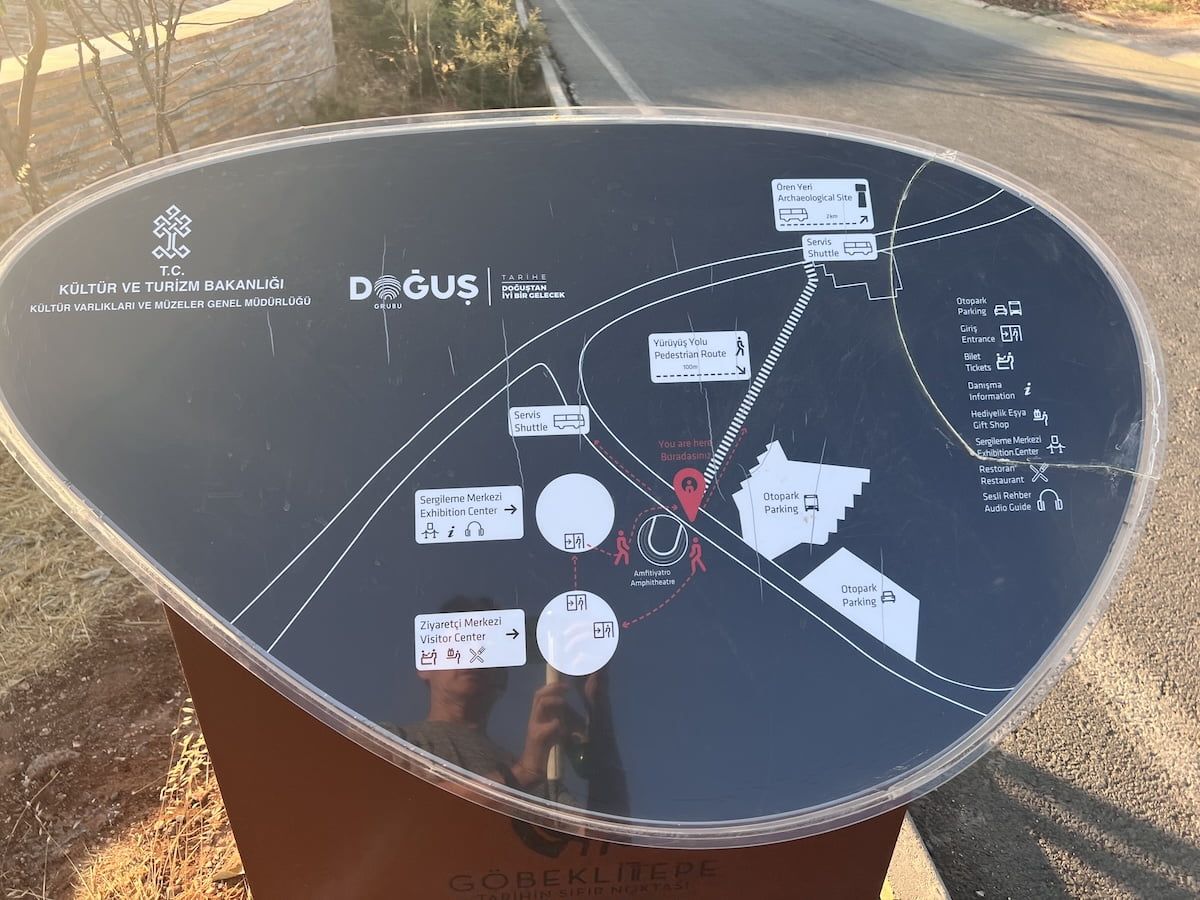

Gobekli Tepe Enclosure A
The Enclosure A at Gobekli Tepe is the youngest of the main enclosures, but still remains part of the earliest construction phases. The “A” name tag reflects the discovery chronology, being one of the first enclosures to be excavated. It’s also the smallest of the enclosures under the tent.
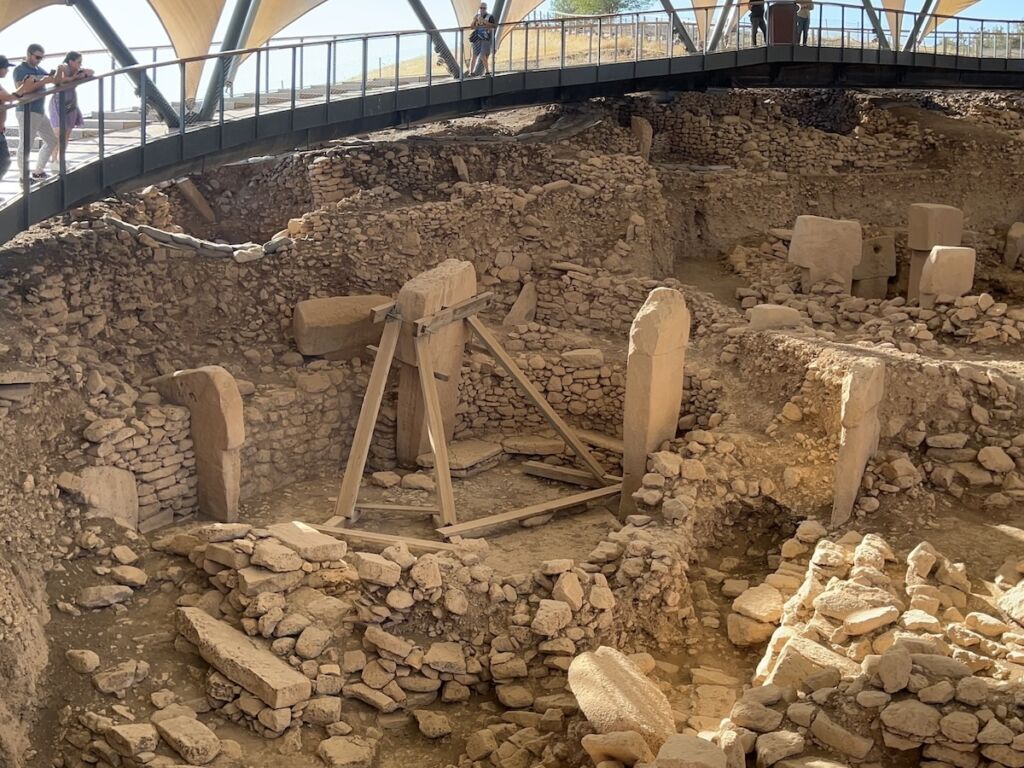
“Building A can probably be assigned to a late phase of the Pre-Pottery Neolithic A (PPNA) and/or Early Pre-Pottery Neolithic B (EPPNB). This structure measures 12×13 metres and features an apse with a low stone bench at its north-western end. The floor of the building has not yet been reached by excavations. It is situated in a hollow between the Southwest and Southeast Mounds. At the northern end of the building, at either side of the apse, stand two decorated T-shaped limestone pillars. Further smaller pillars can be seen incorporated into the southwest and northeast facing walls of the building. The entrance to the structure was probably located in the south-eastern wall where the remains of a floor-level doorway, which comprise a U-shaped stone, have been found. A similar stone is known from the entrance of Building C.”
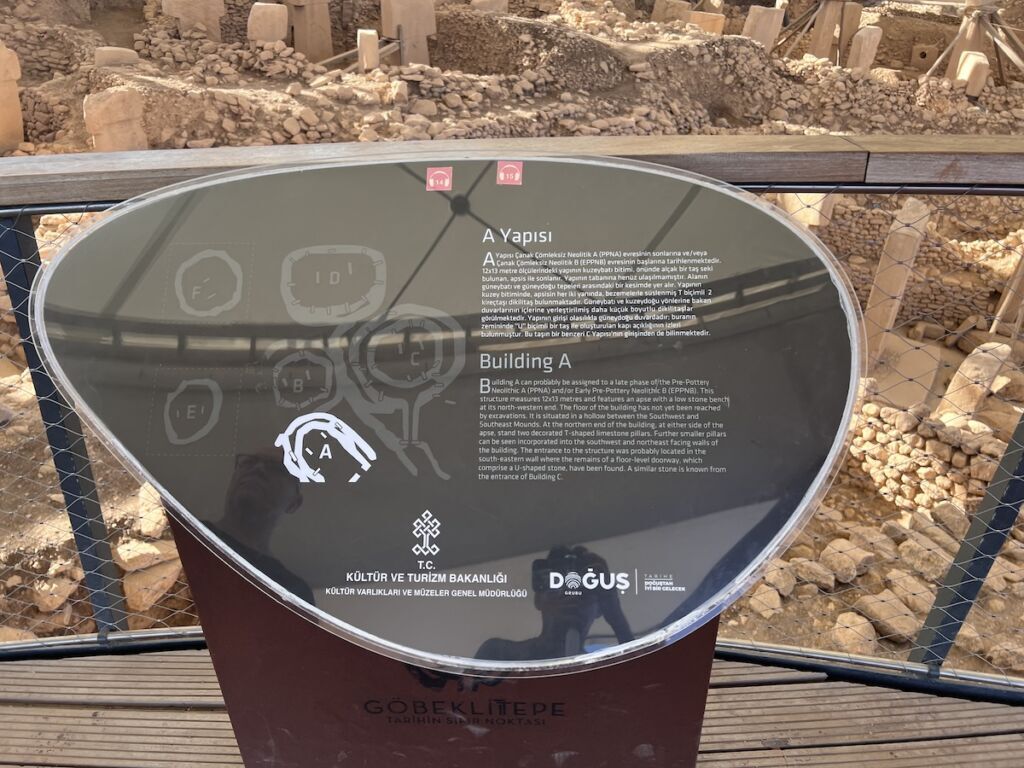
Gobekli Tepe Enclosure A Photos

Gobekli Tepe Enclosure C
Enclosure C is the largest one under the canopy, and has a more intricate arrangement of T-pillars compared to the others. The two central pillars are broken. Where are the broken pieces and how tall were they?
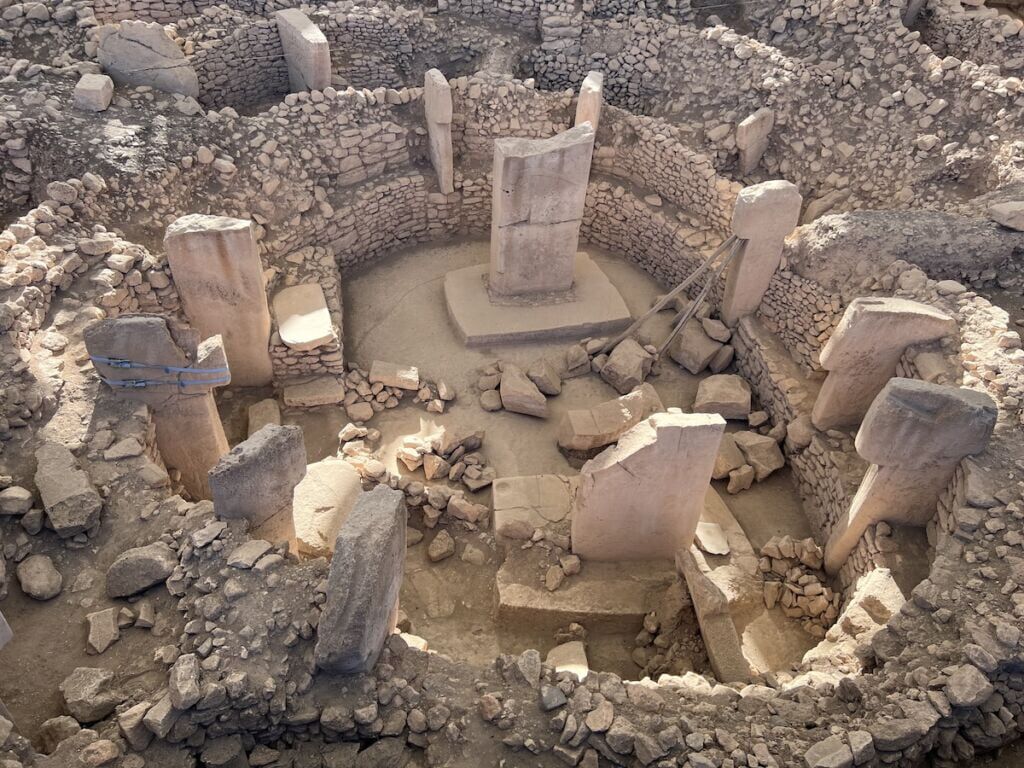
“Building C is located east of Building B. It is an impressive round-oval building with a diameter of approximately 25 meters. Building C is the largest monumental building discovered at the site so far. It can be dated to the Pre-Pottery Neolithic A (PPNA) and/or Pre-Pottery Neolithic B (PPNB). Building C was erected directly upon the artificially smoothed limestone bedrock and comprised three concentric walls, each from a different phase of the building.
While the outer wall belongs to its oldest phase, the inner wall was erected in its youngest phase. The inner wall features a total of nine T-shaped pillars found in-situ, though the original number was probably higher. At the centre of the building two pedestals carved from the natural limestone bedrock hold a pair of much larger T-shaped monoliths. A narrow corridor (dromos) leading from the outer ring of the building could be a former entrance. The opening to the dromos is marked by a large U-shaped stone with the preserved sculpture of a predator on its western side.”
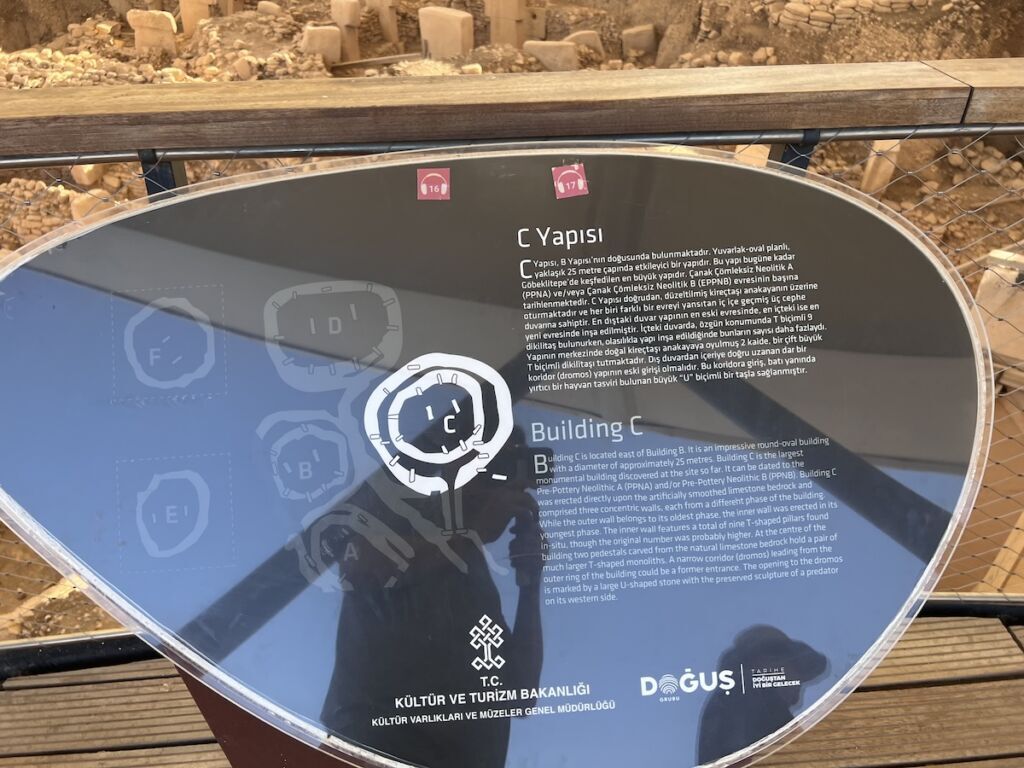
Gobekli Tepe Enclosure C Photos

Gobekli Tepe Enclosure D
Enclosure D, the oldest and crown jewel of this ancient site, is filled with towering T-shaped pillars intricately carved with animals and enigmatic symbols. The famous “Vulture Stone,” Pillar 43 is here and captures the imagination of everyone who has tried to decode the detailed reliefs. It’s slightly smaller than Enclosure C, but is equally, if not more, mysterious.
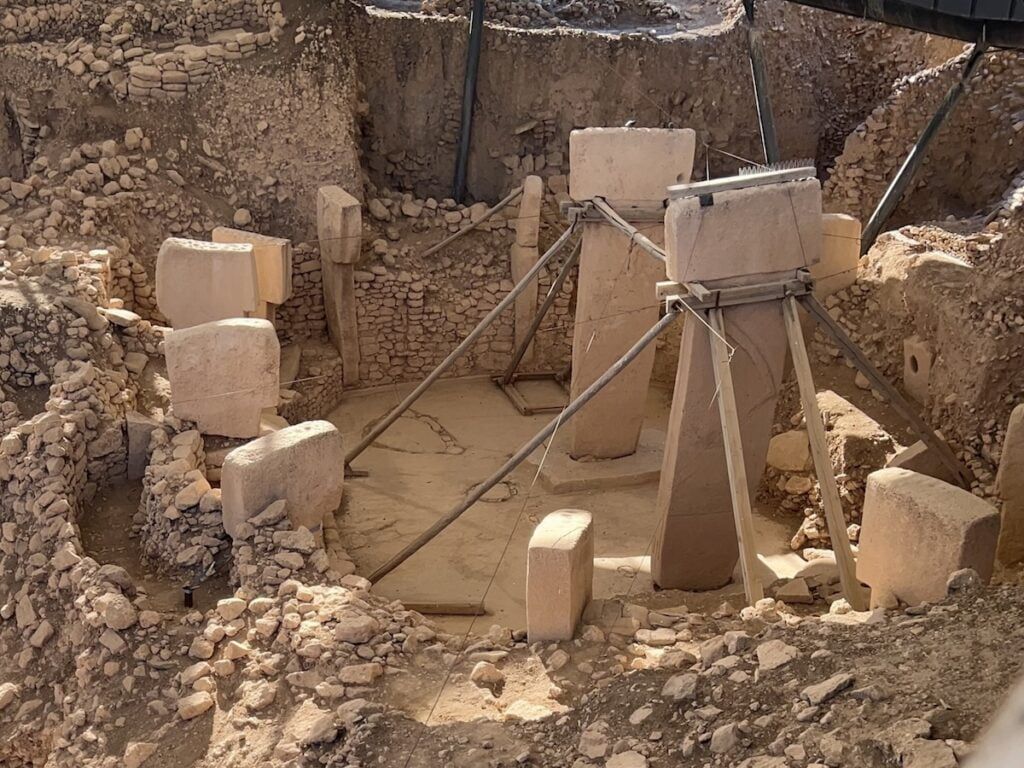
“Building D is the best preserved of the monumental buildings discovered at Gobekli Tepe so far. This oval-shaped building is 20 meters in diameter at its widest point, and like Building C it was erected upon the carefully smoothed limestone bedrock. Building D has been dated to the Pre-Pottery Neolithic A (PPNA) and/or Early Pre-Pottery Neolithic B (EPPNB) period.
The two large central pillars were found slotted into shallow (15 cm deep) pedestals that had also been carved from the natural bedrock. The wall of the building is interrupted at regular intervals by at least twelve smaller T-shaped pillars. In some parts of Building D lime plaster was found still adhering to the inner surface of the wall. Preservation of wall plaster could imply that the building was originally roofed. Additionally, a roof structure would have provided more support for the large central pillars with their very shallow foundations.”
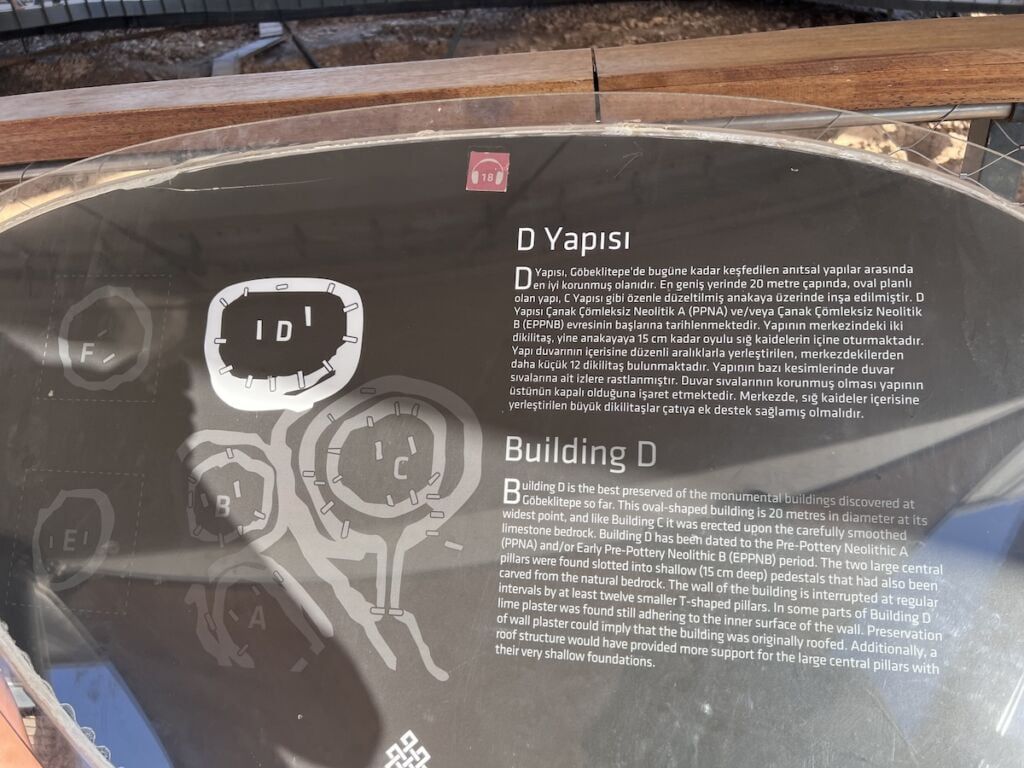
Gobekli Tepe Enclosure D Photos

Gobekli Tepe Enclosure B
Enclosure B is a smaller structure than the others while still having the same T-pillar layout. Maybe for kids. A notable feature is the rectangular “porthole stone” inside.
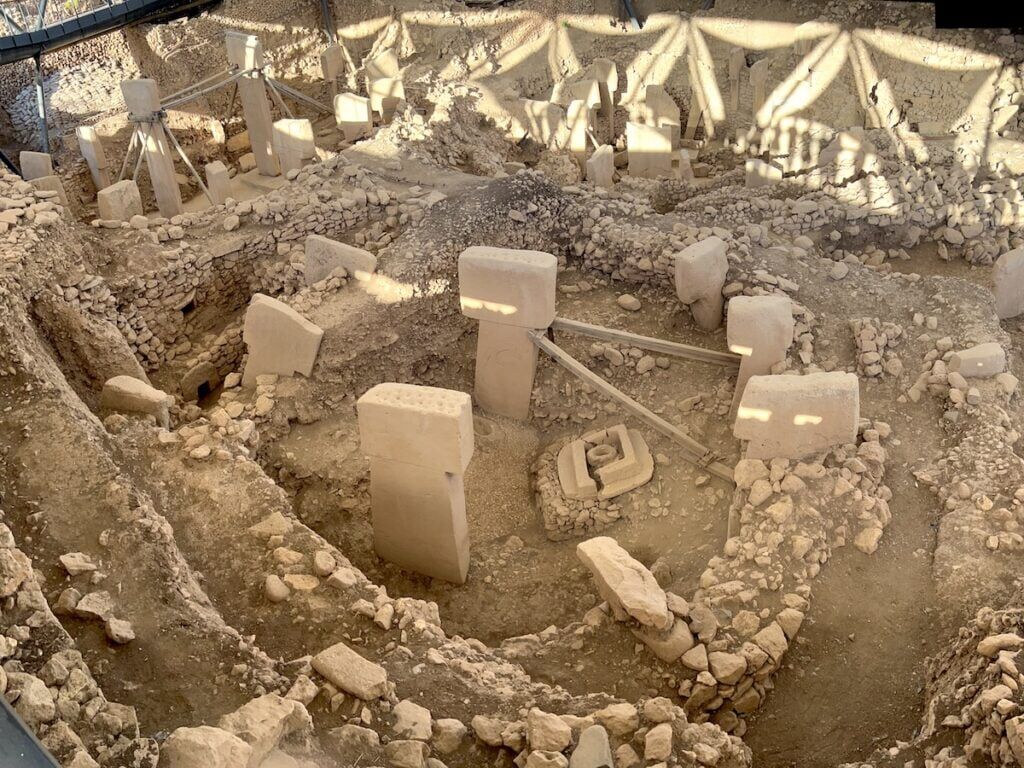
“Building B is located north of Building A and can be attributed to the Pre-Pottery Neolithic A (PPNA) and/or Early Pre-Pottery Neolithic B (EPPNB). The building is circular in shape with a diameter of 12 meters. Unlike Buildings C and D, which were erected upon the worked natural limestone, Building B features an artificial terrazzo floor.
The two central pillars are the largest pillars in this building. A further nine smaller pillars are incorporated into its surrounding limestone wall, though this number will probably increase when excavations are resumed.”
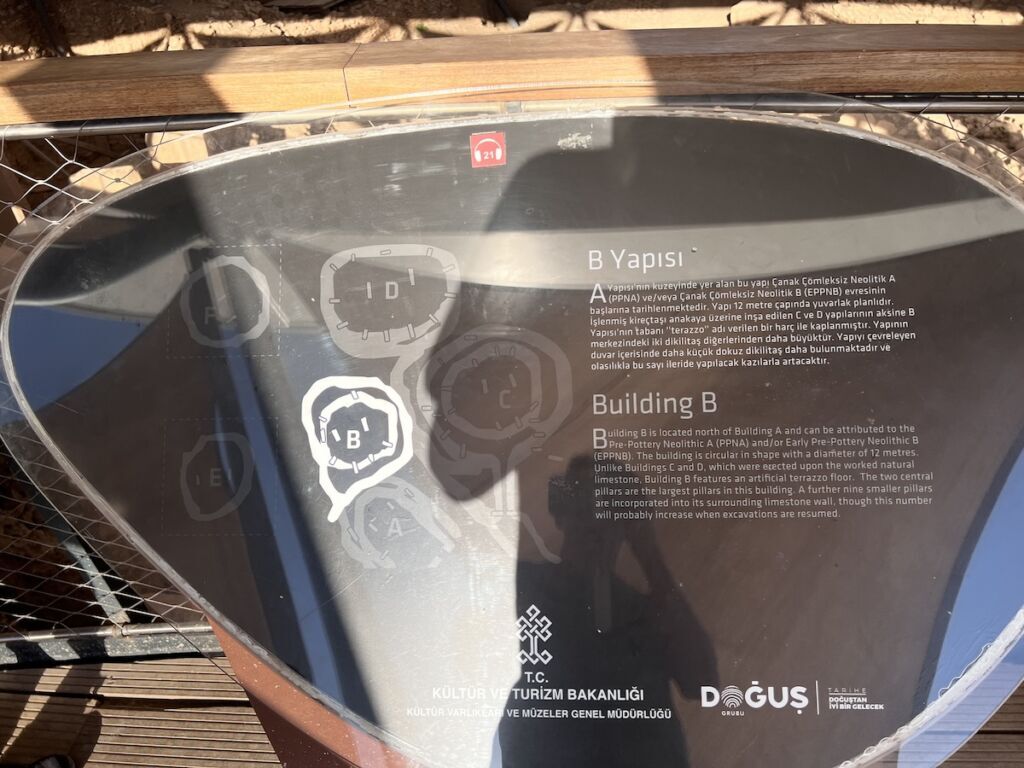
Gobekli Tepe Enclosure B Photos
Gobekli Tepe Enclosure F
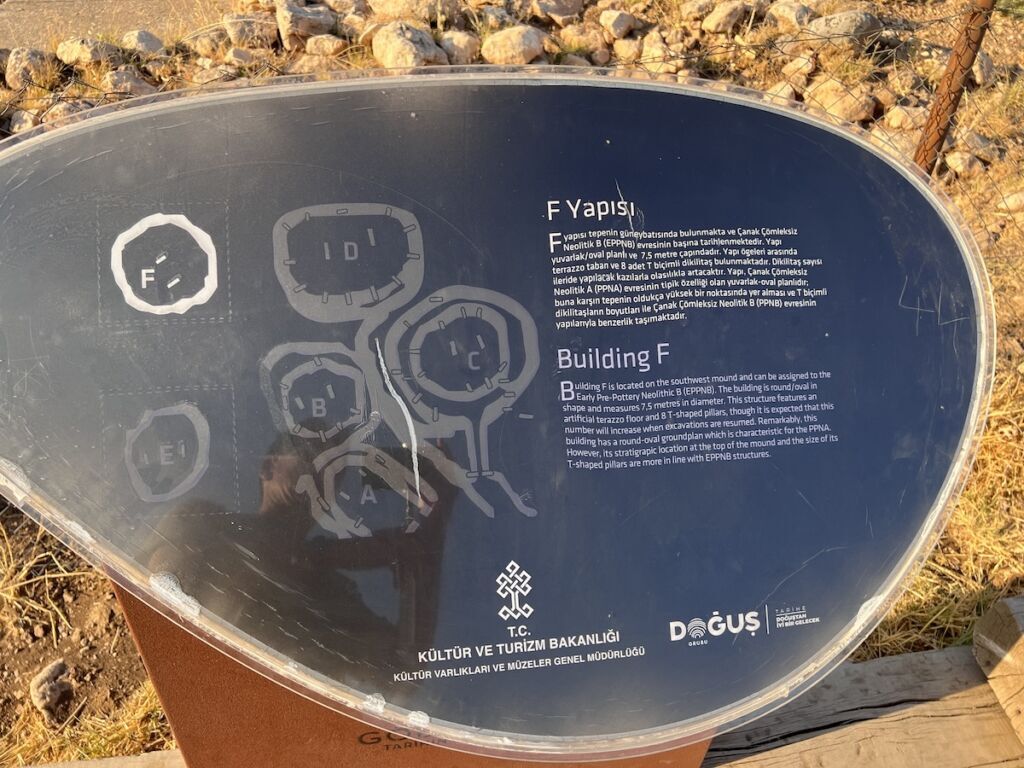
“Building F is located on the southwest mound and can be assigned to the Early Pre-Pottery Neolithic B (EPPNB). The building is round/oval in shape and measures 7.5 meters in diameter. This structure features an artificial terazzo floor and 8 T-shaped pillars, though it is expected that this number will increase when excavations are resumed. Remarkably, this building has a round-oval groundplan which is characteristic for the PPNA. However, its stratigraphic location at the top of the mound and the size of its T-shaped pillars are more in line with EPPNB structures.”

Göbekli Tepe’s enclosures continue to mystify and raise questions about the history of ancient humans. Was this a transitional ceremonial space or were people simply living here. The timing with the Younger-Dryas period is also interesting.
Was this some sort of reboot of society and technology as Graham Hancock suggests. Or, was it just a coincidence. Either way, Gobekli Tepe is a must see for anyone interested in ancient civilizations, after you see the Egyptian Great Pyramid Tour, of course.
You must also check out the Gobekli Tepe sister site, Karahan Tepe for more strange, ancient stone structures.
Additional Gobekli Tepe Videos
If you want to learn more about this ancient site of Gobekli Tepe, the Megalithomania UK YouTube channel contains a wealth of videos. Here’s a couple of recent updates.
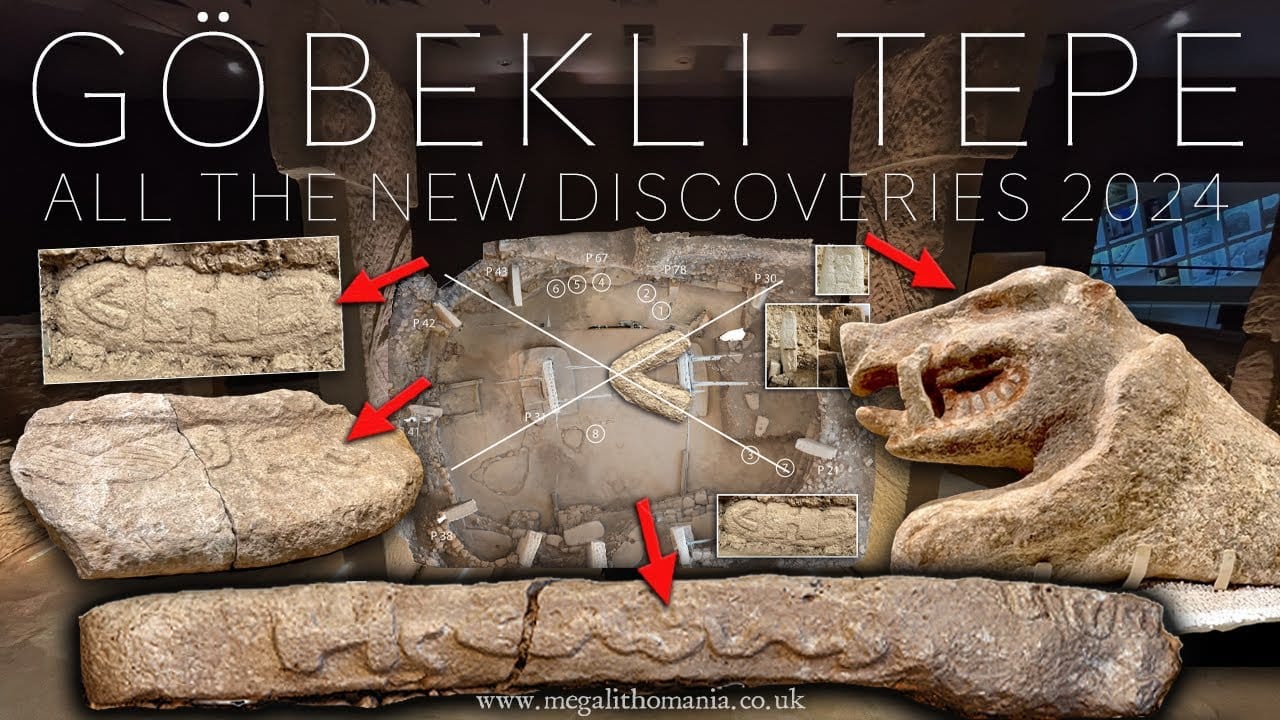
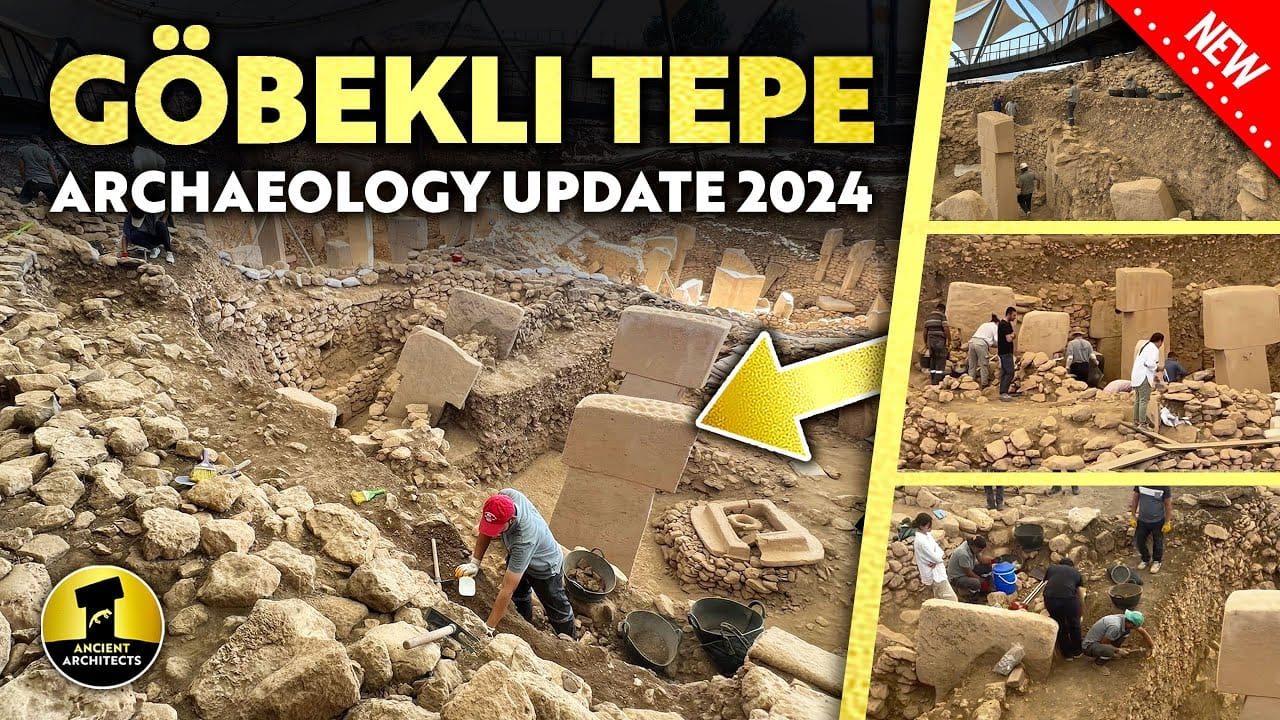
Have you already been to Gobekli Tepe, or want to visit there? Let us know your thoughts in the comments below.
Part of the Megalithomania UK Gobekli Tepe & Karahan Tepe Turkey Tour
